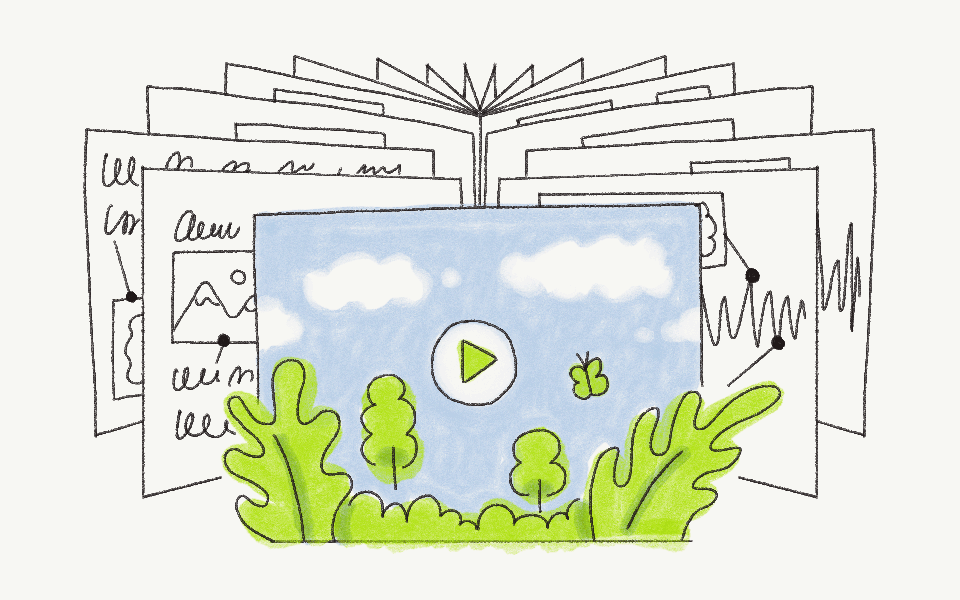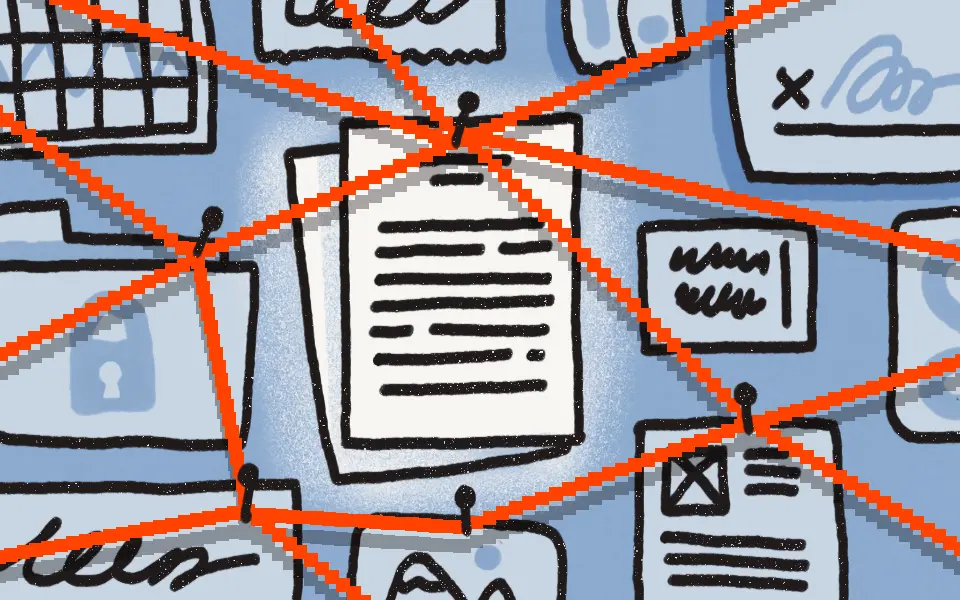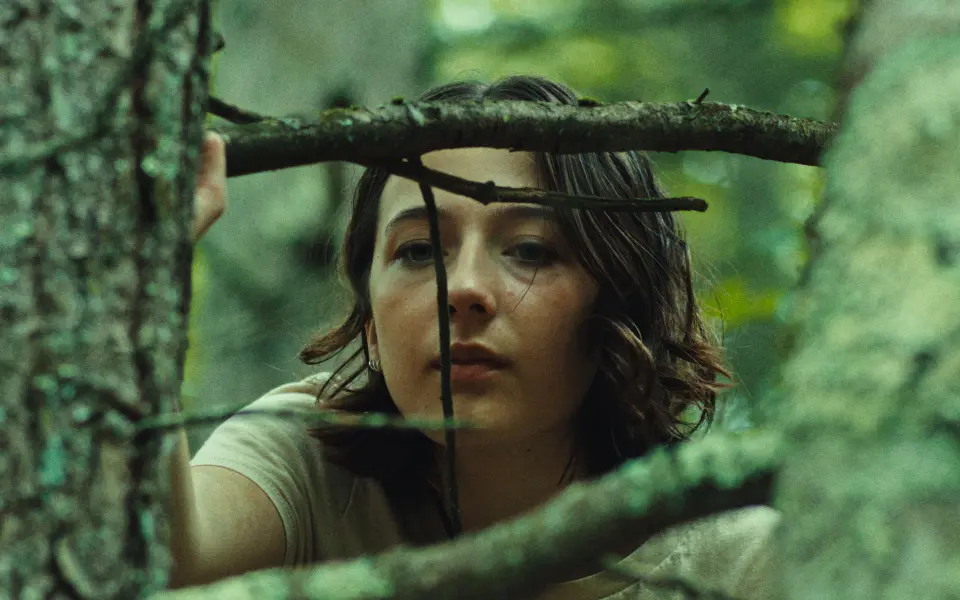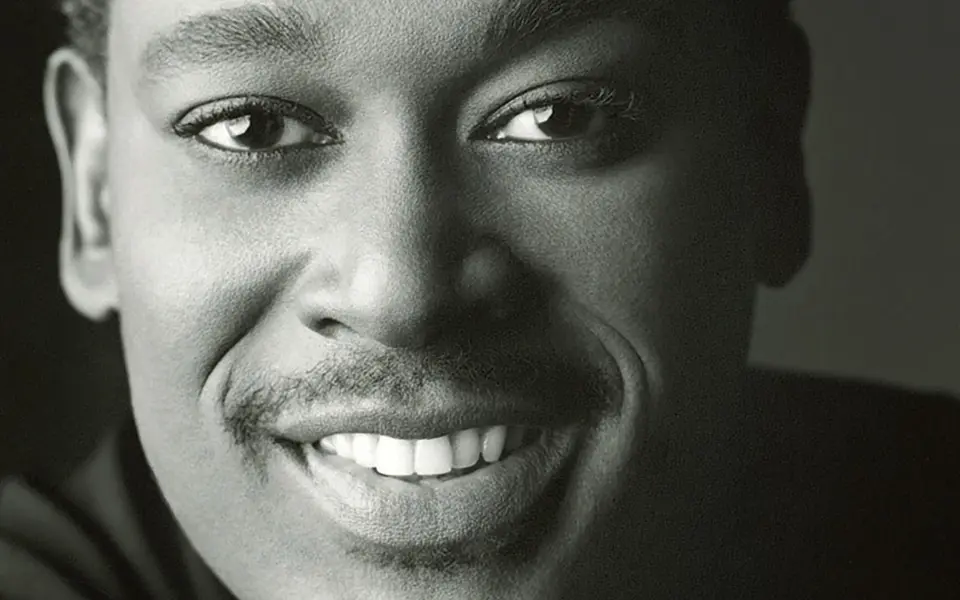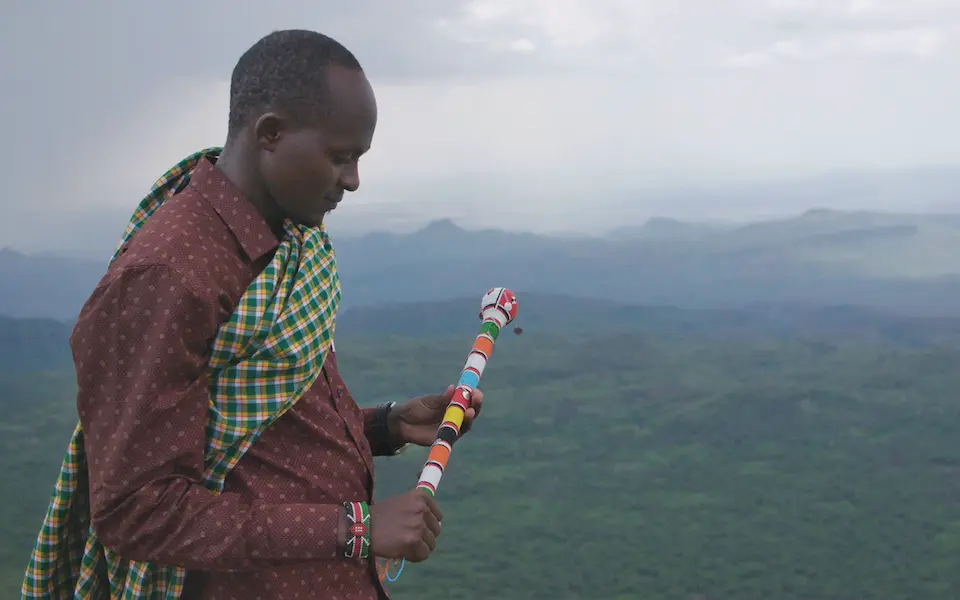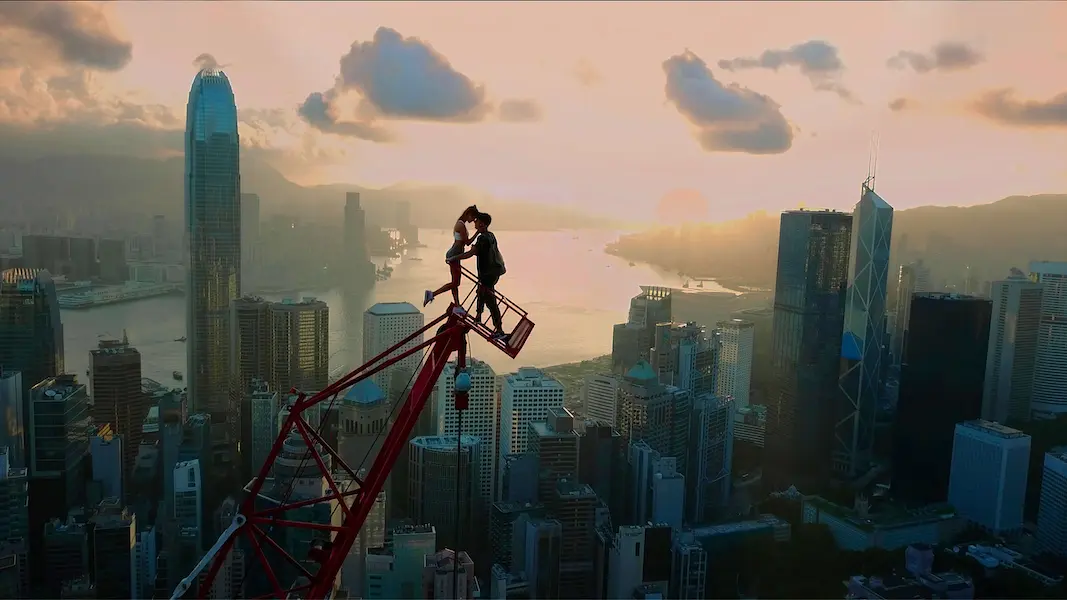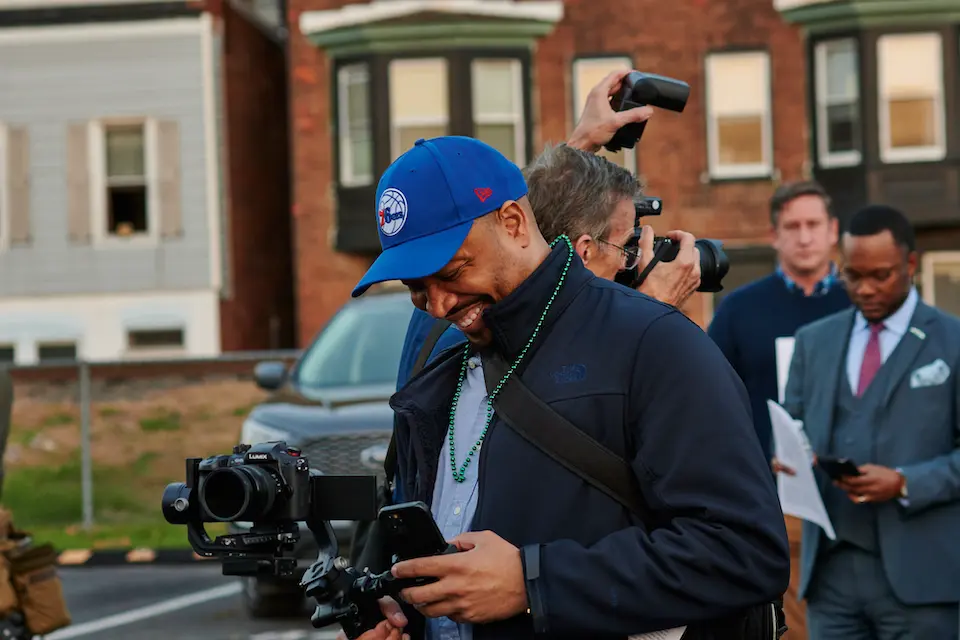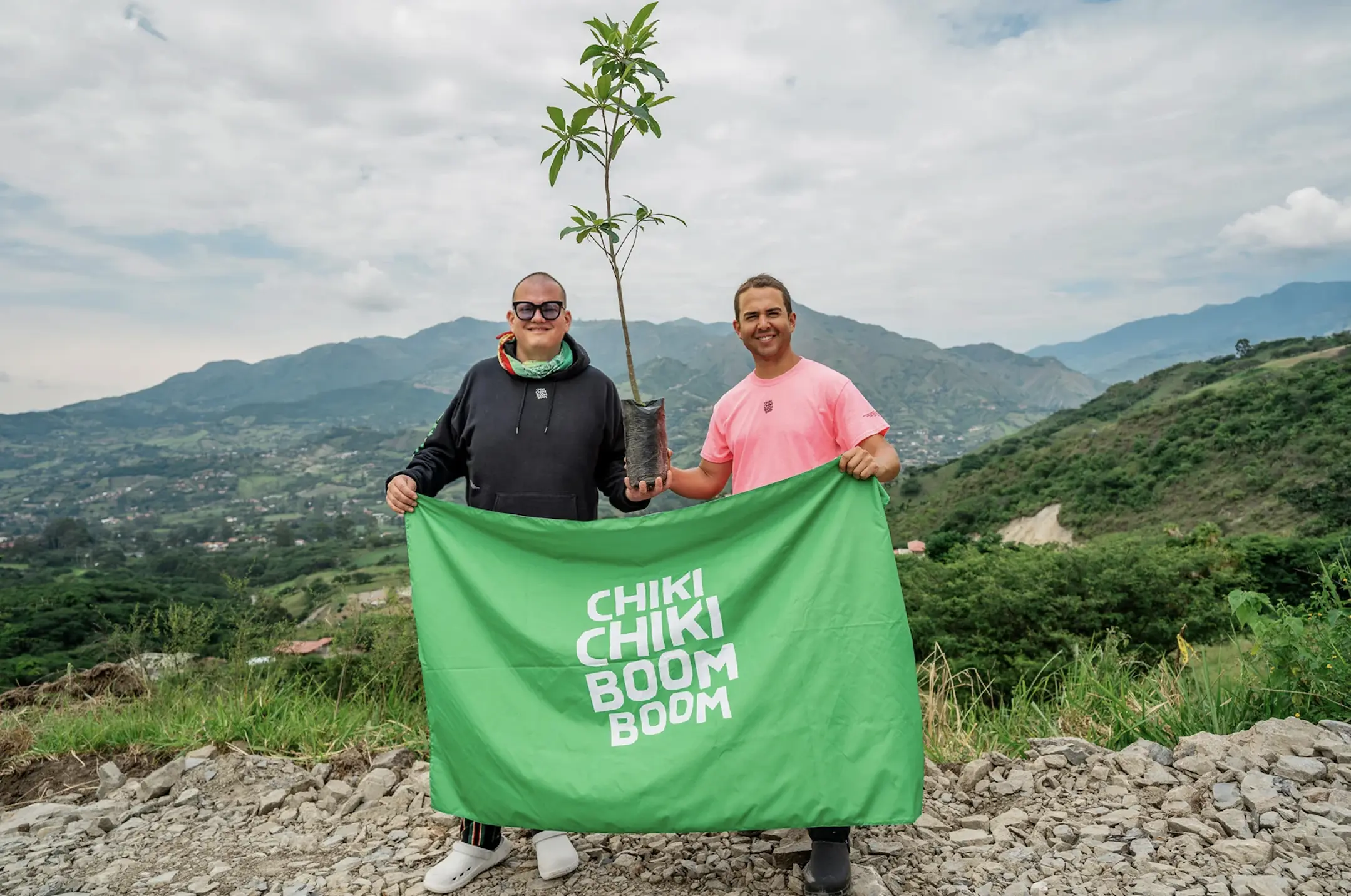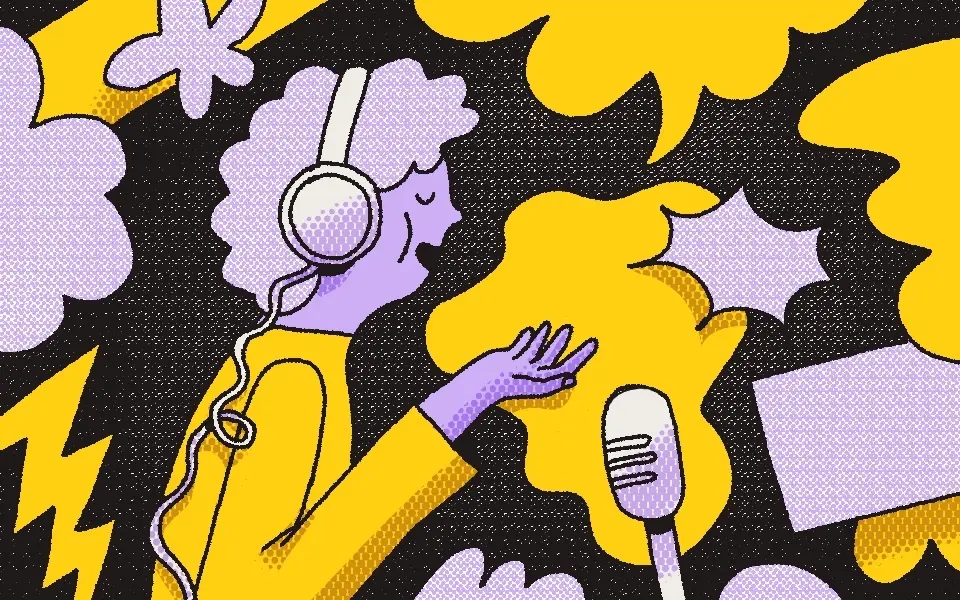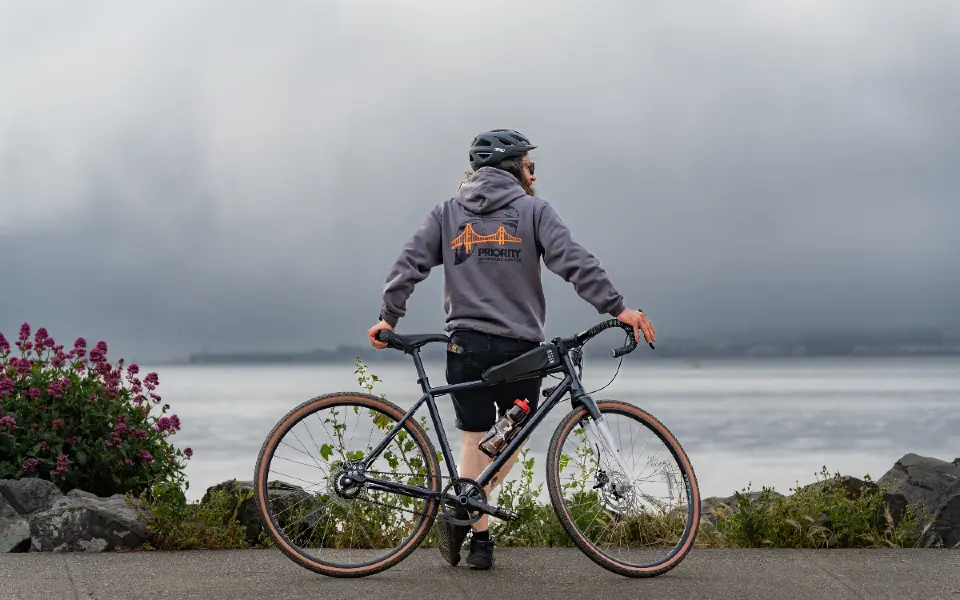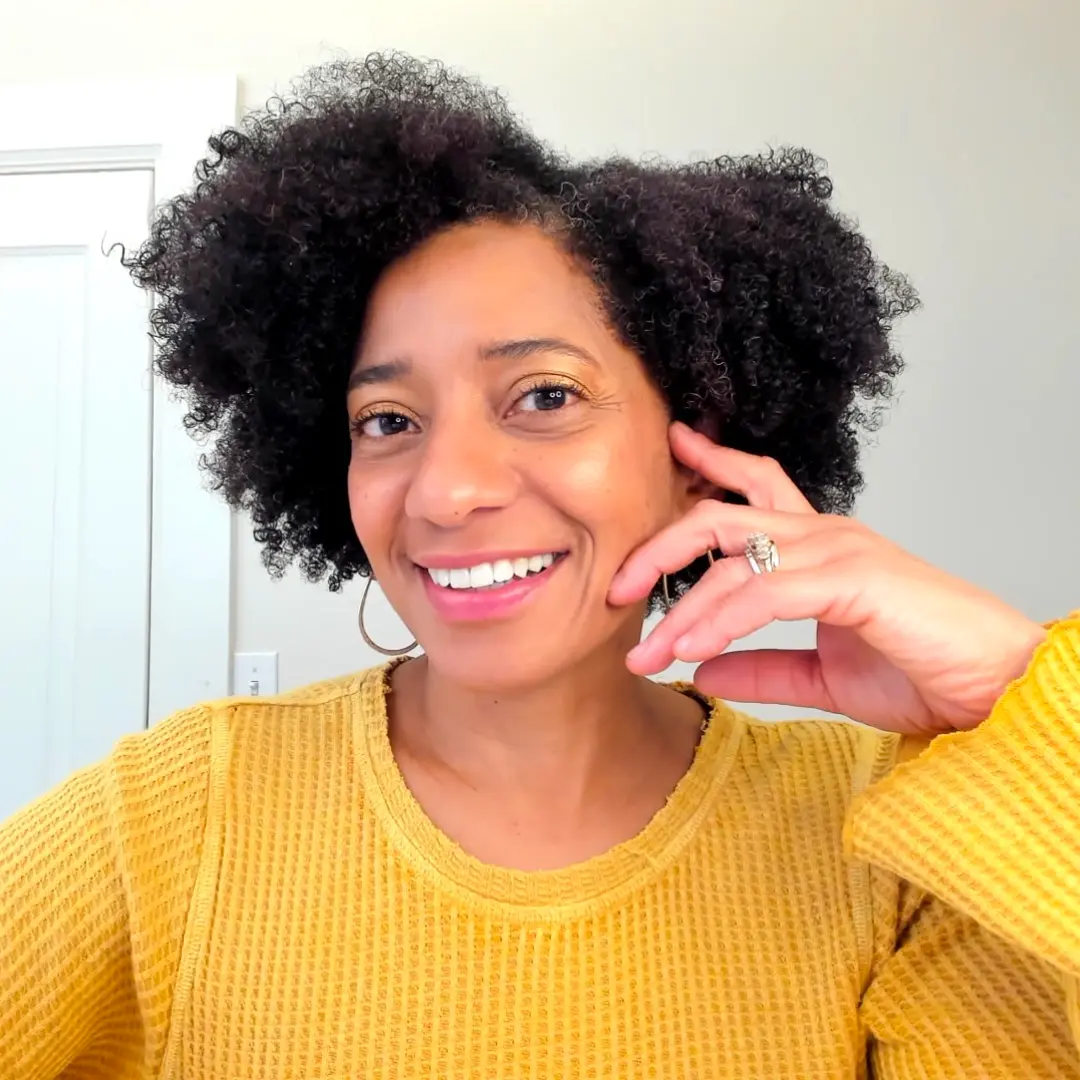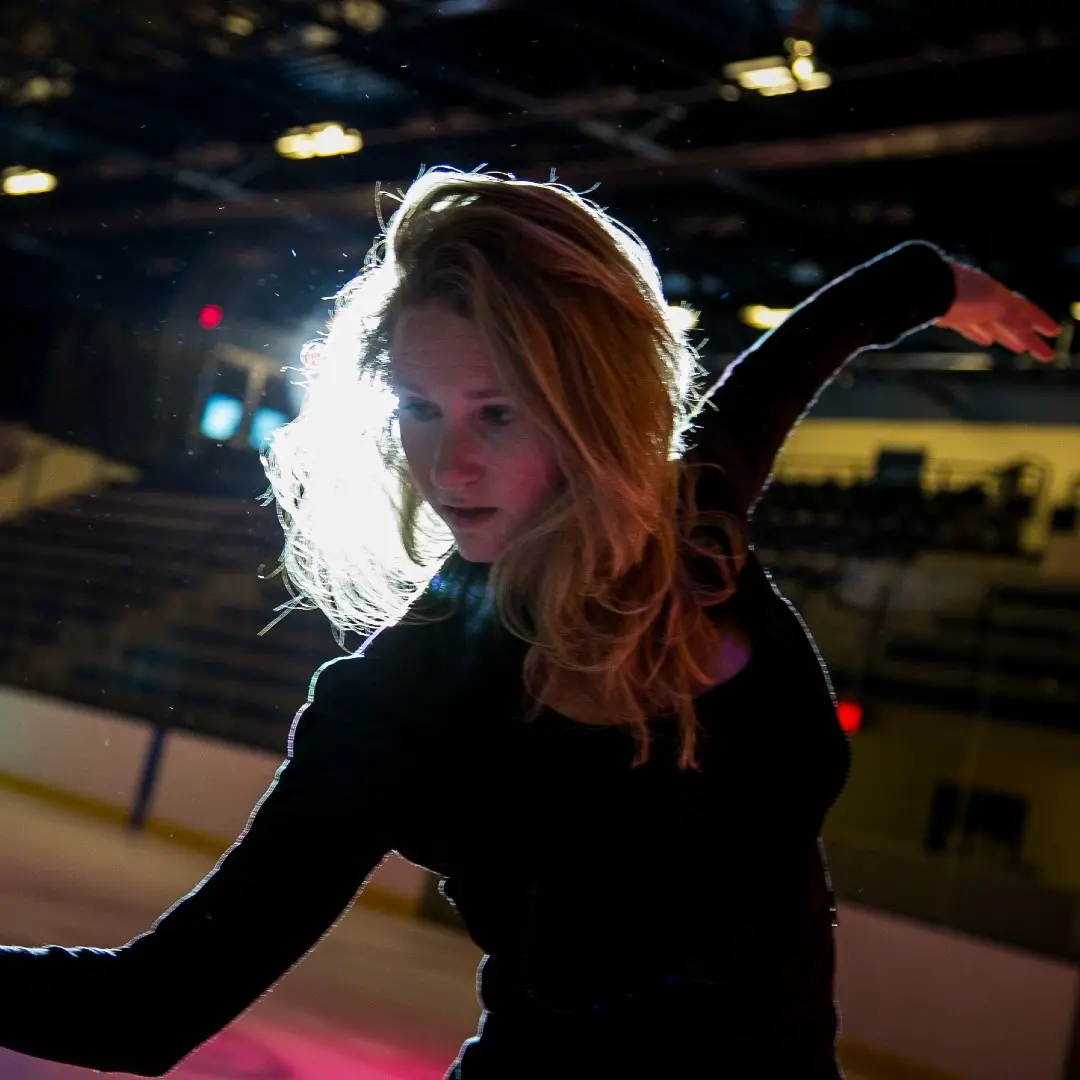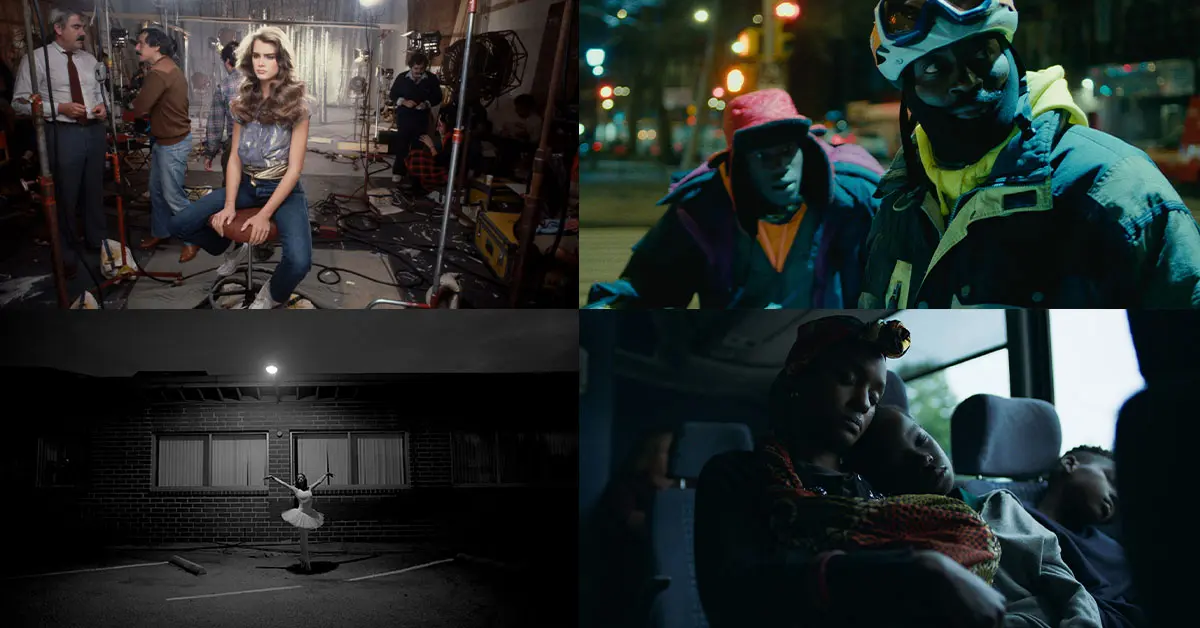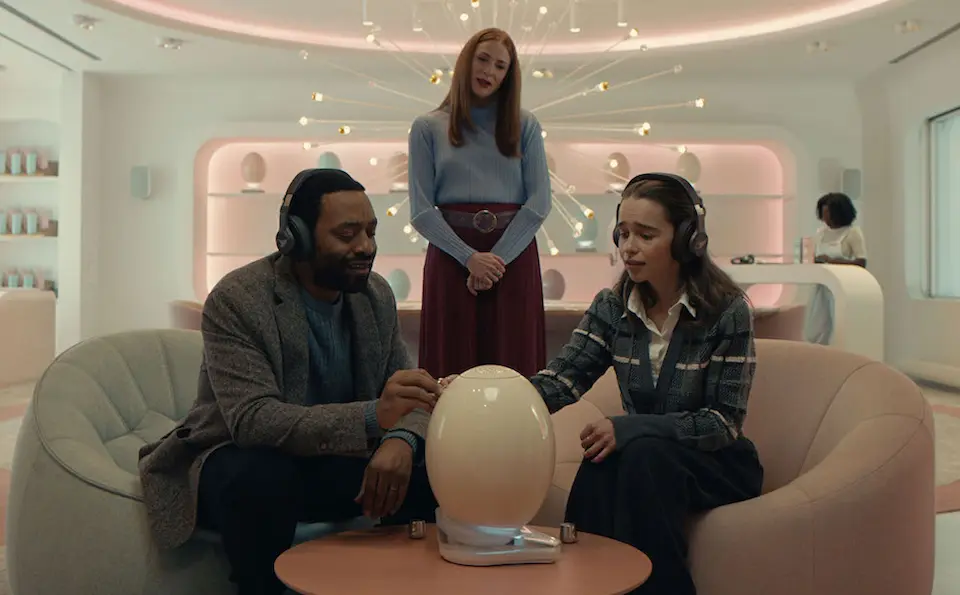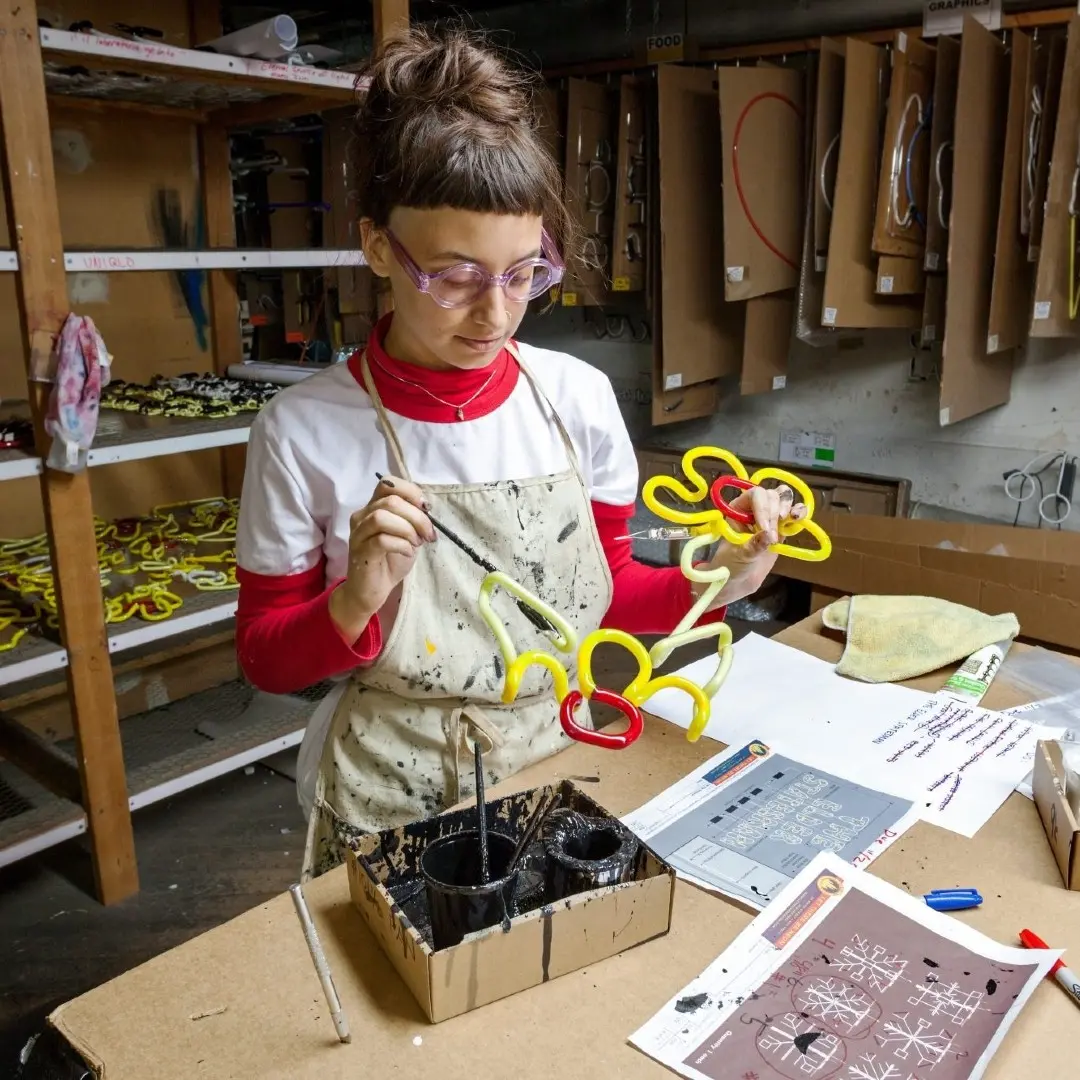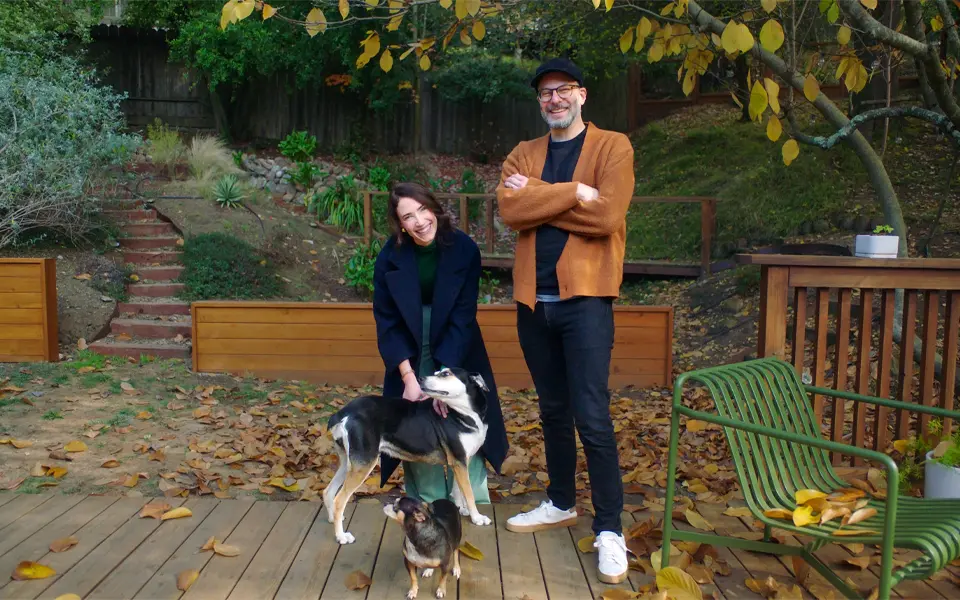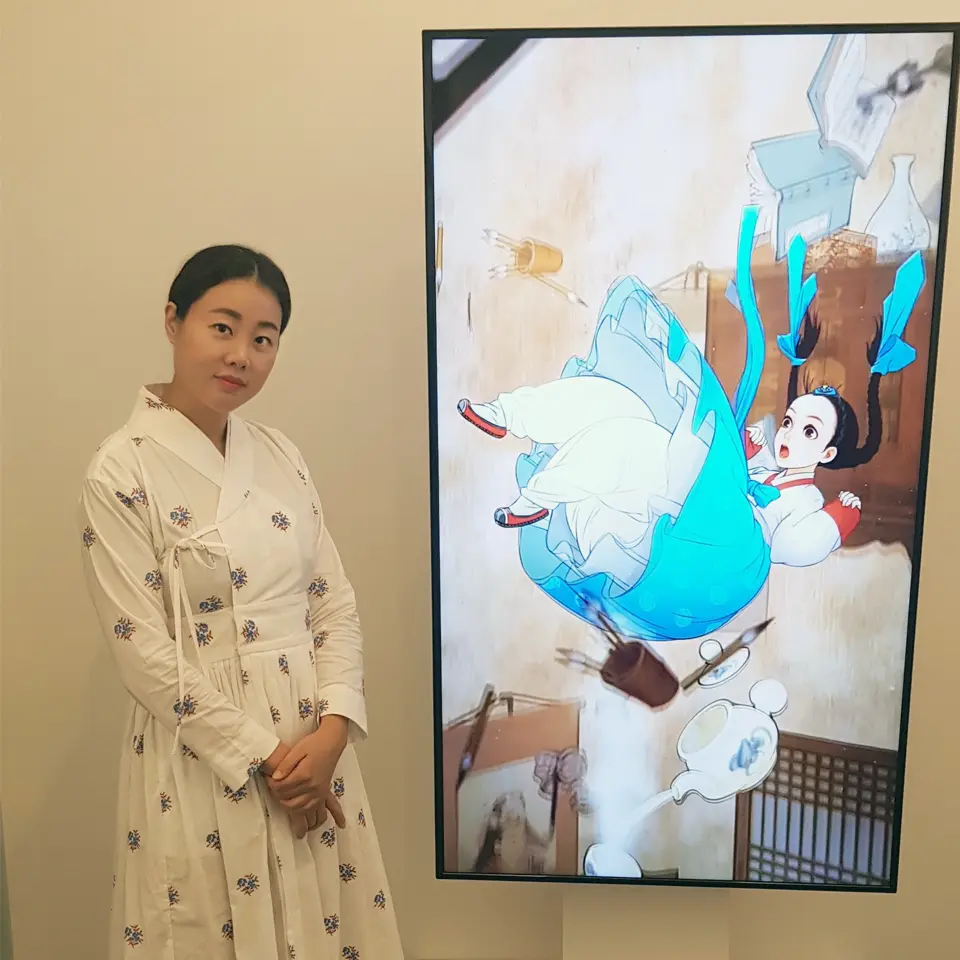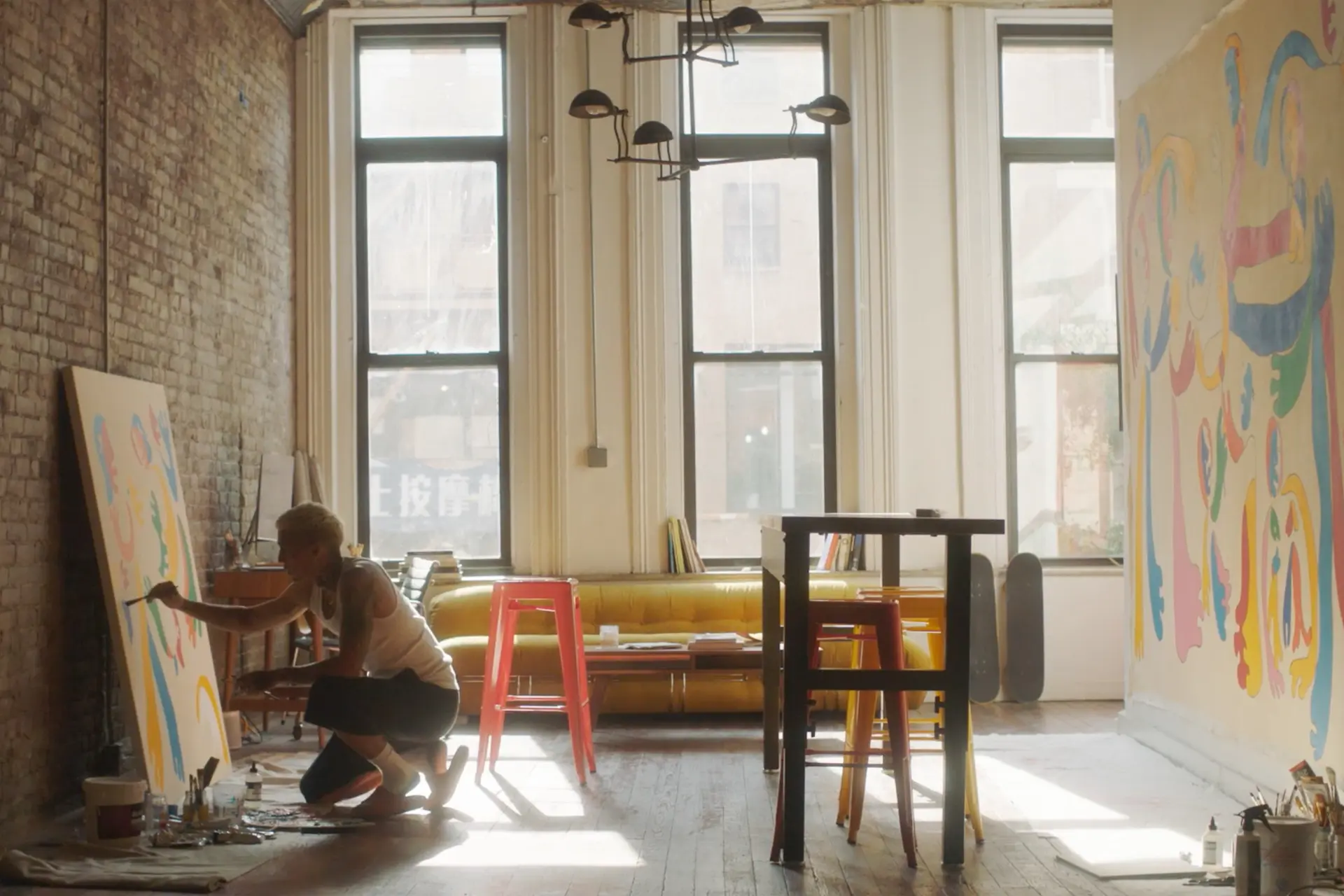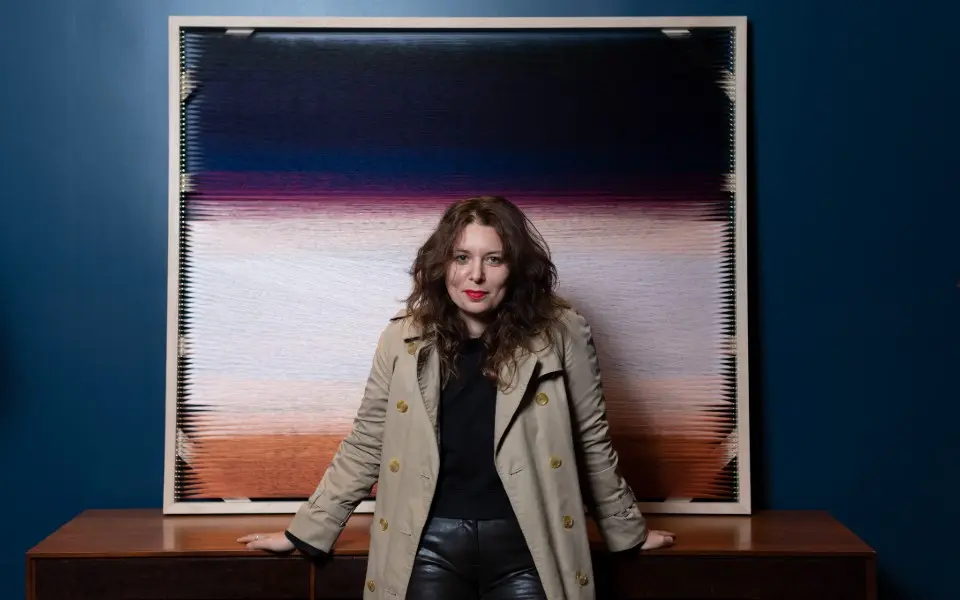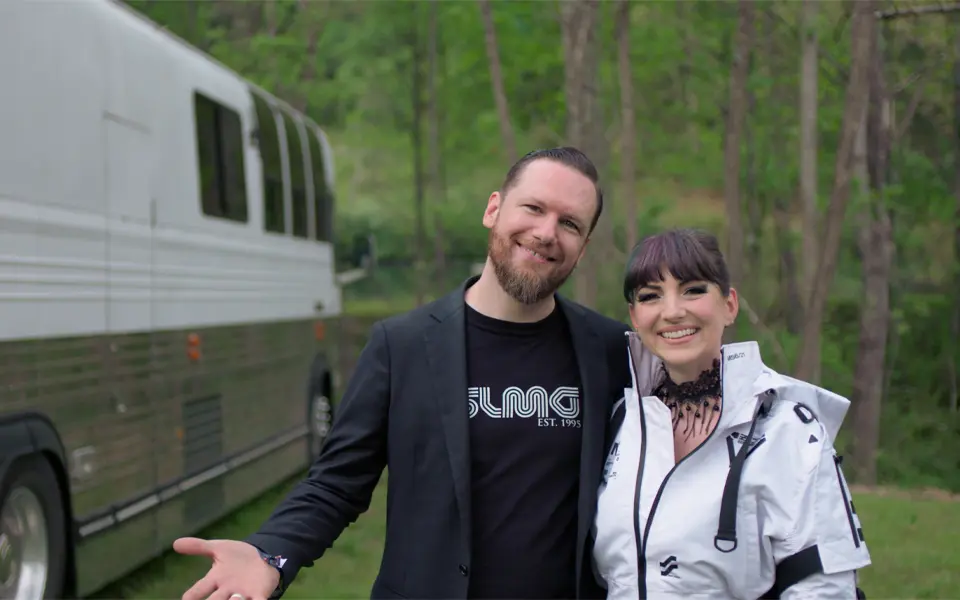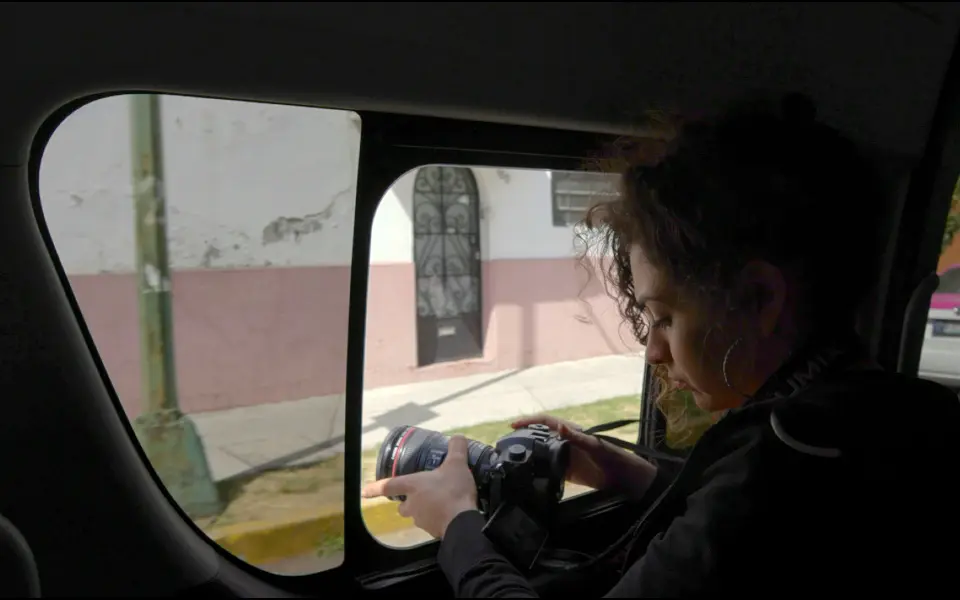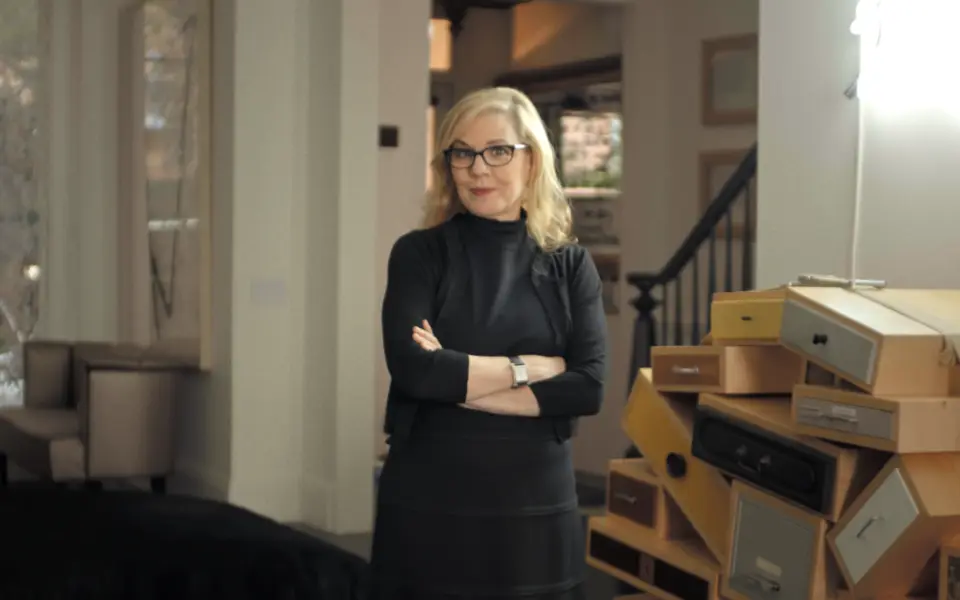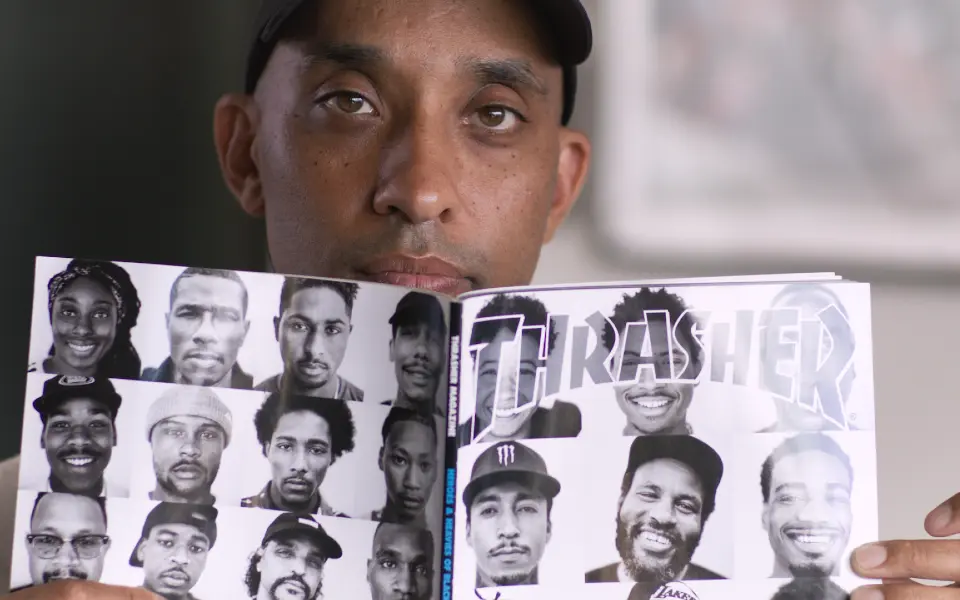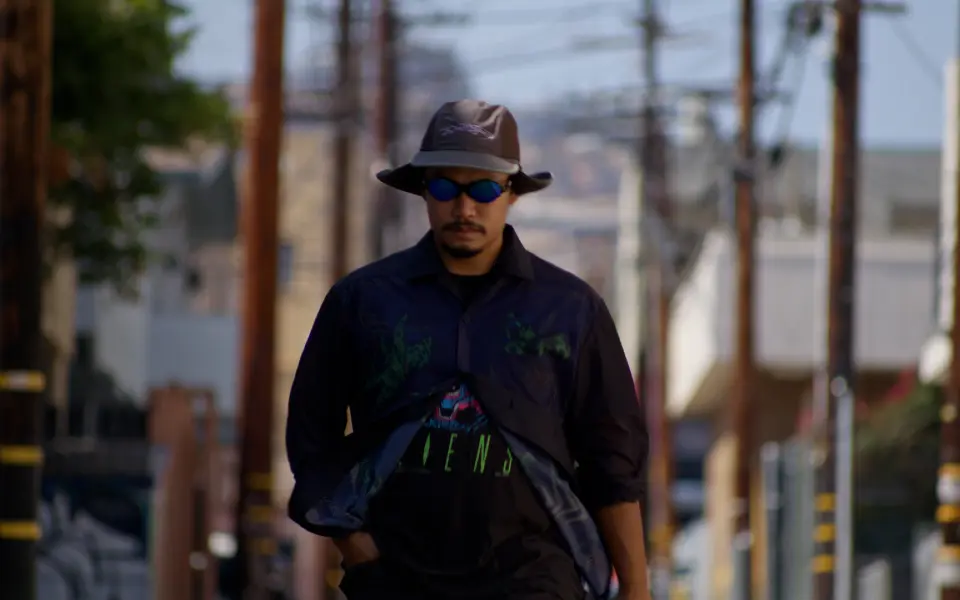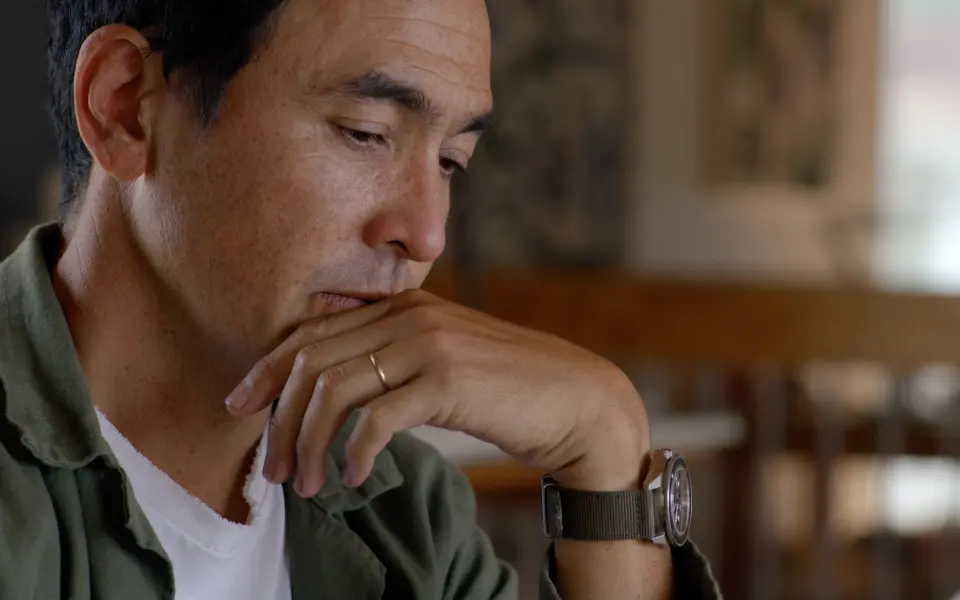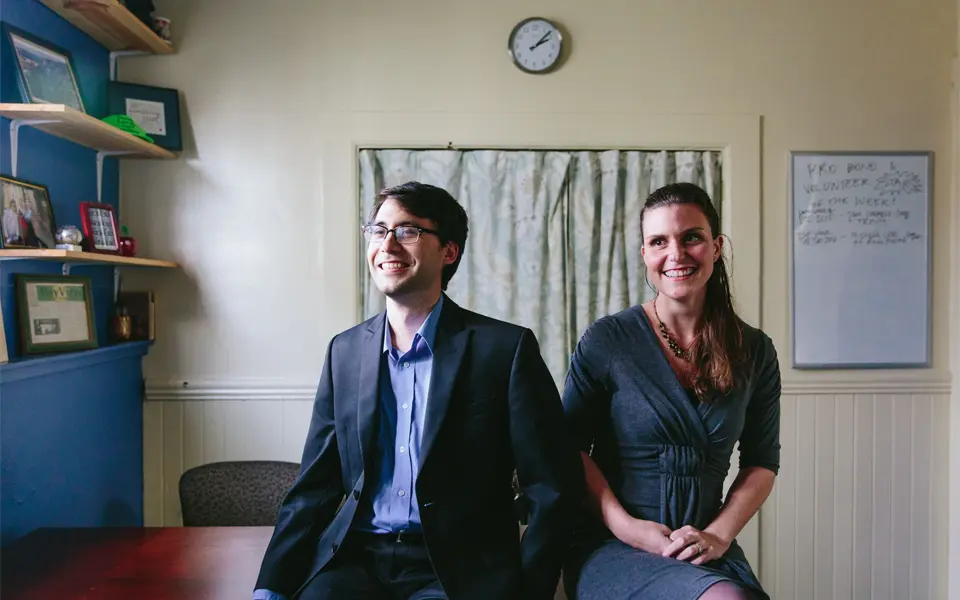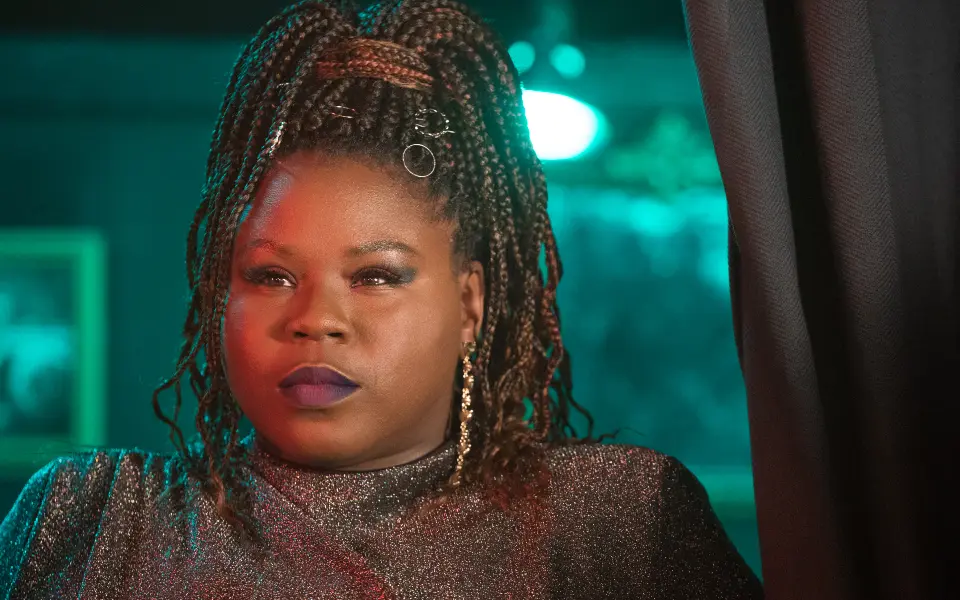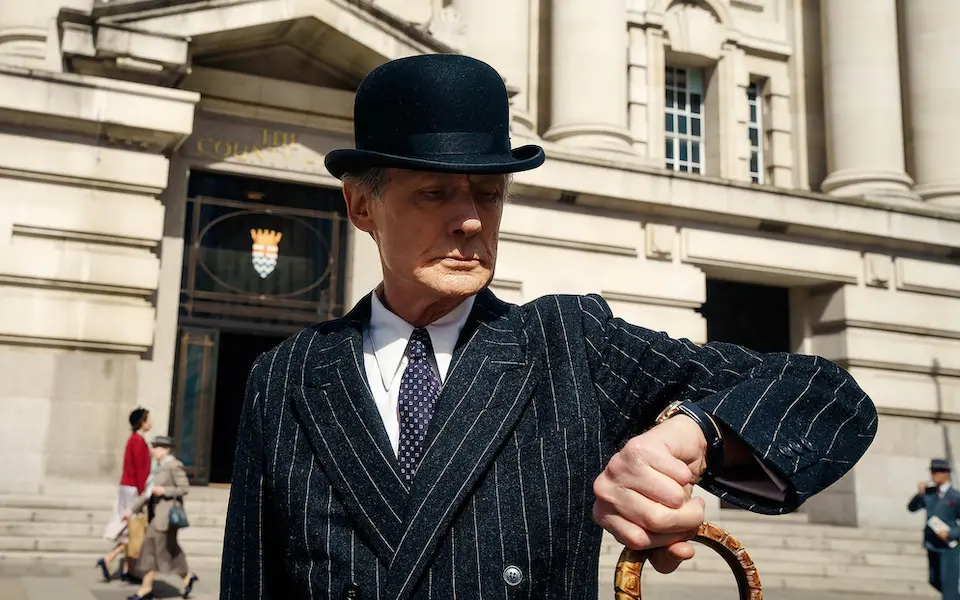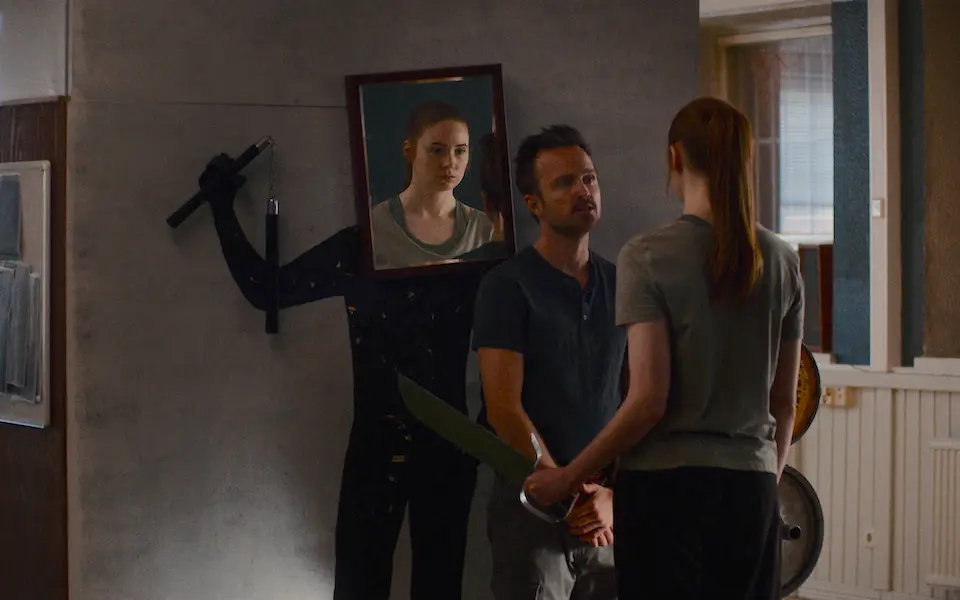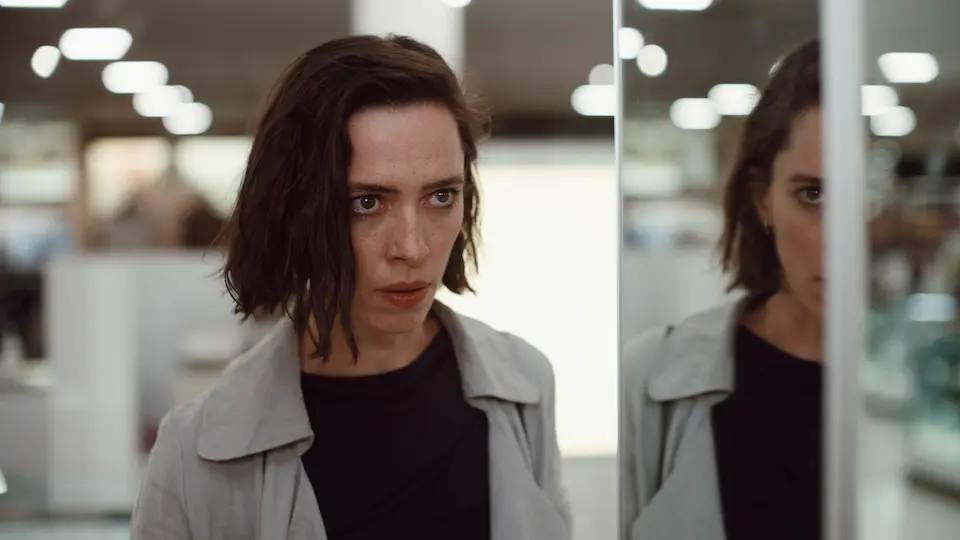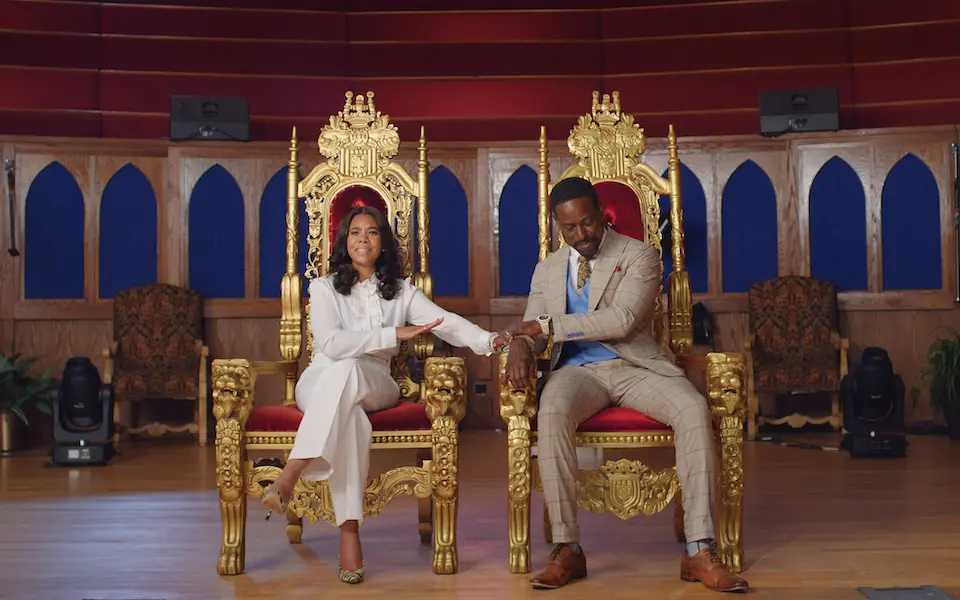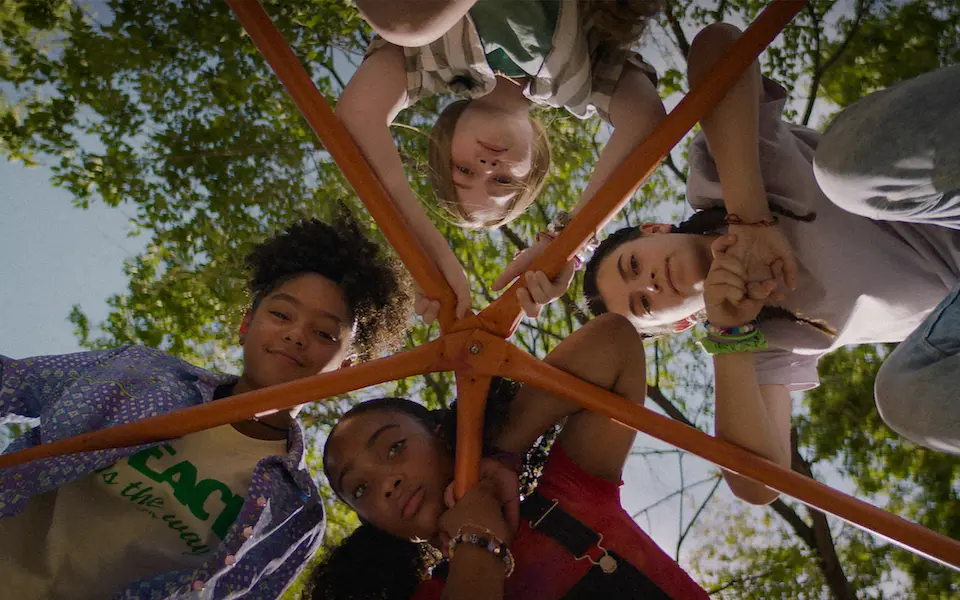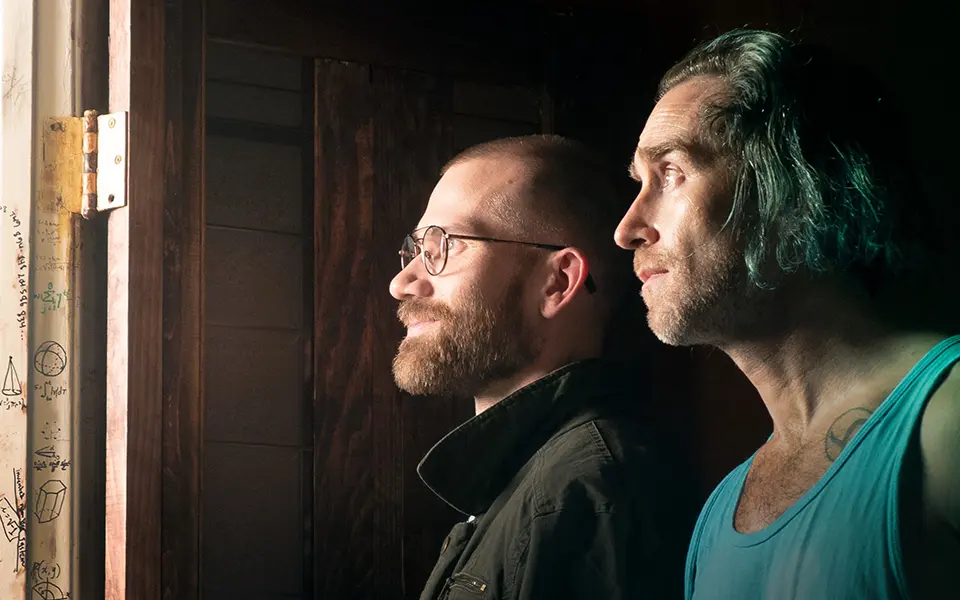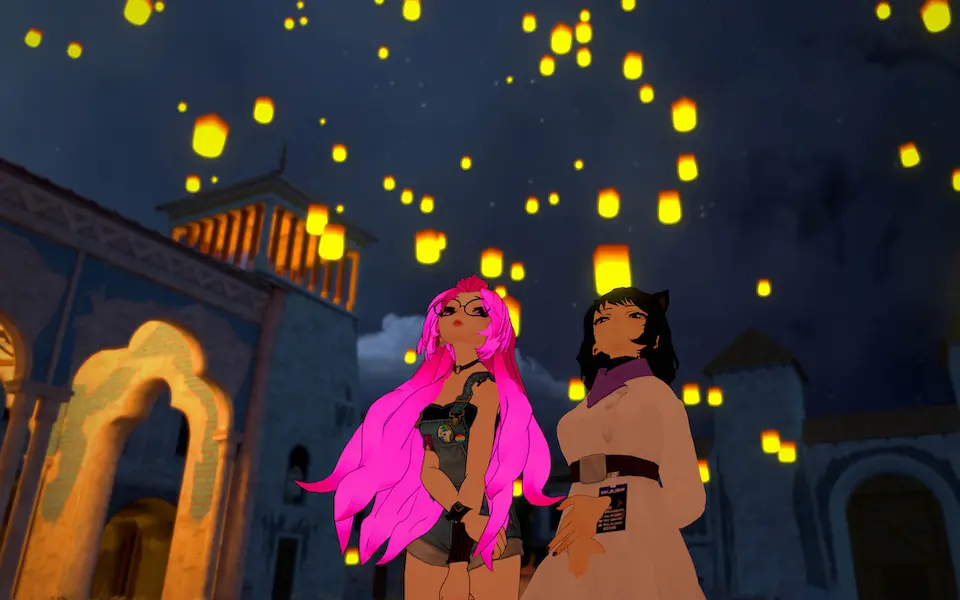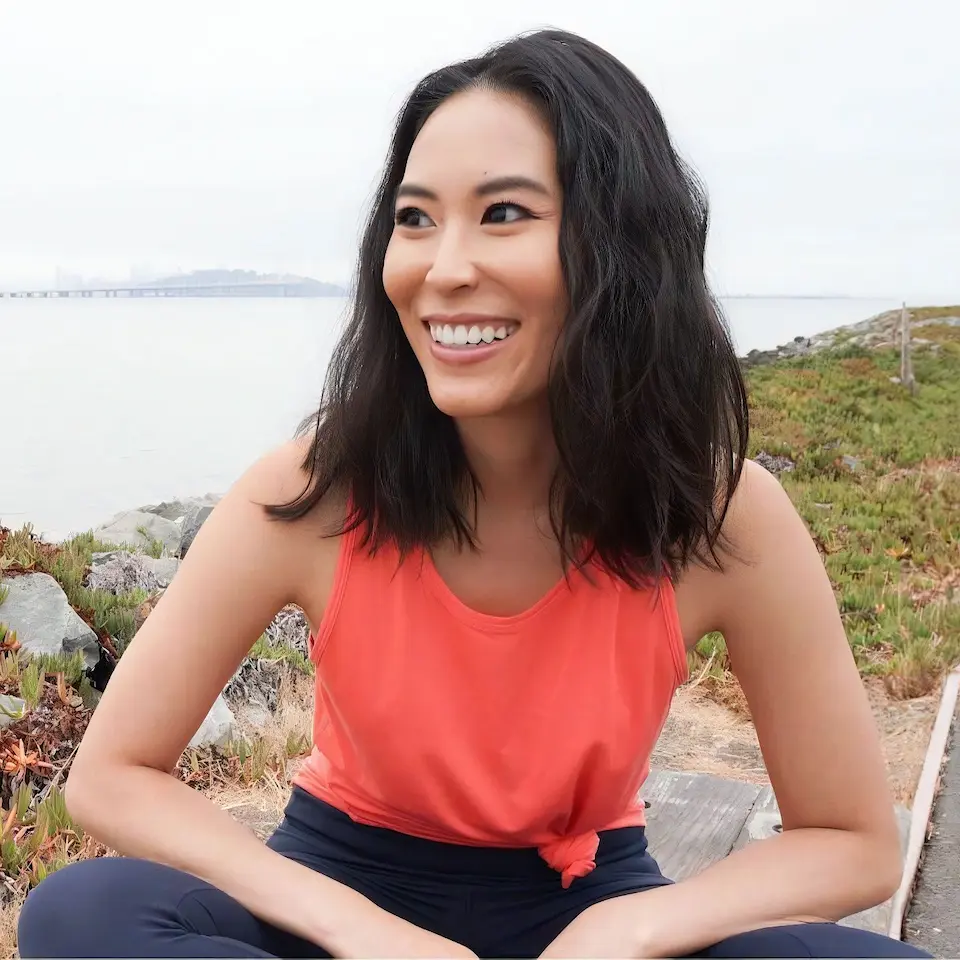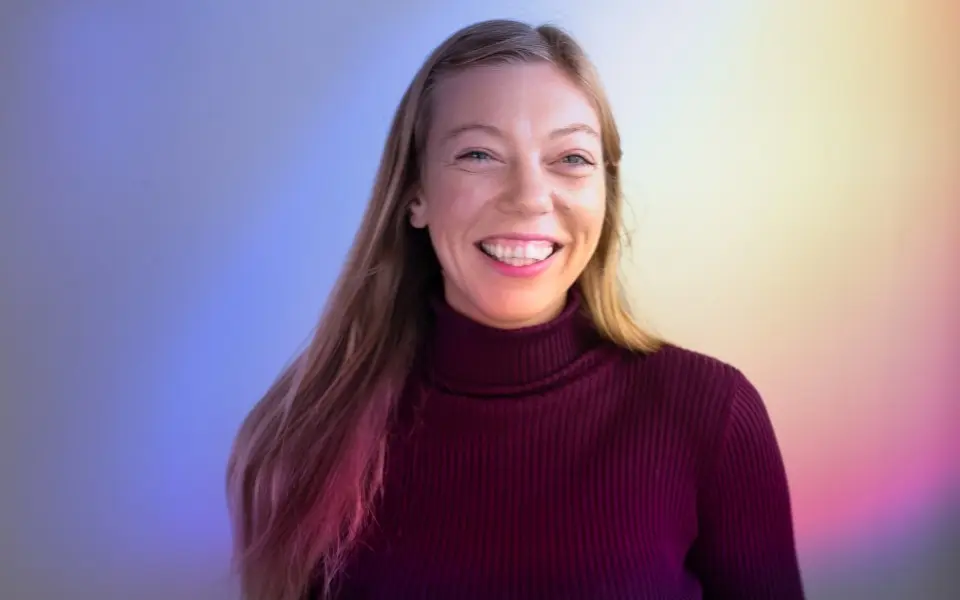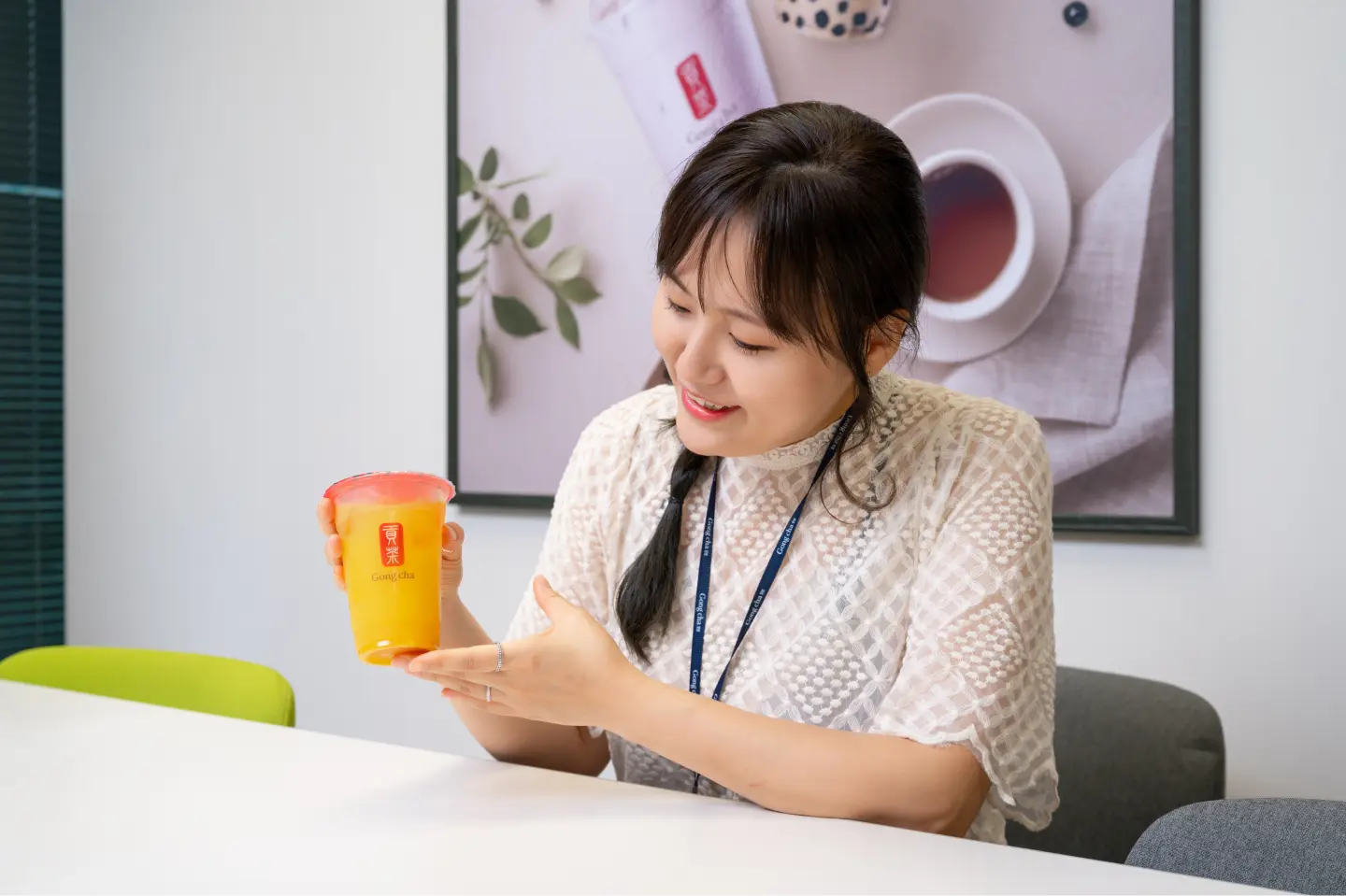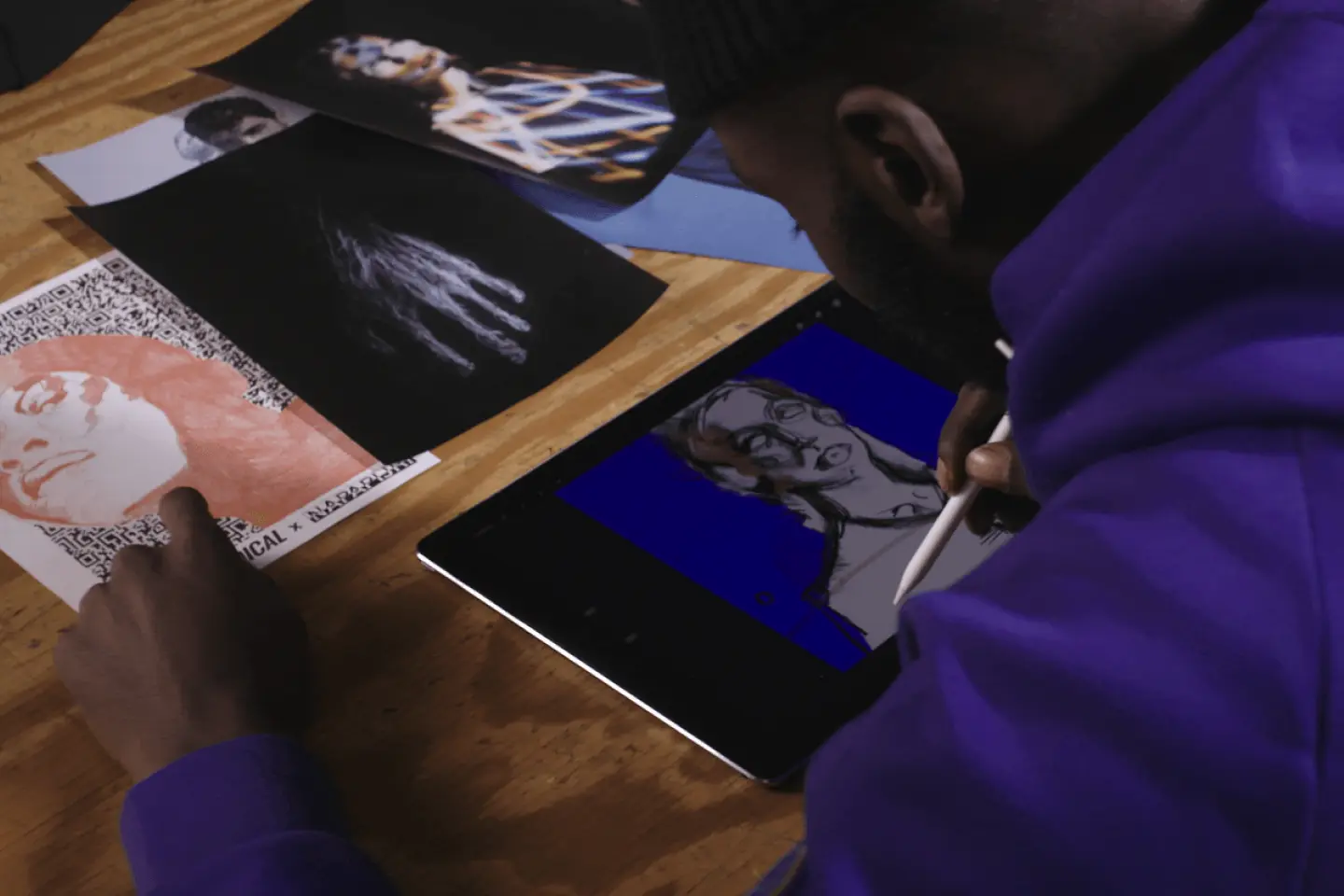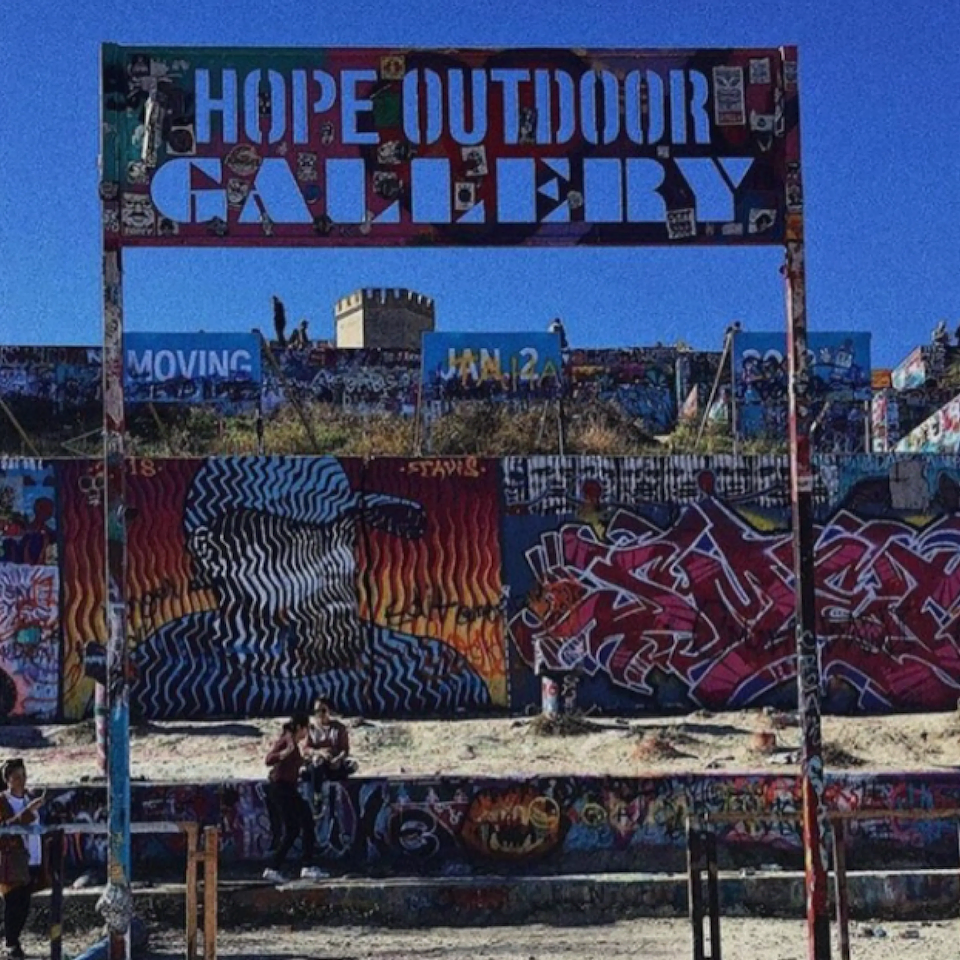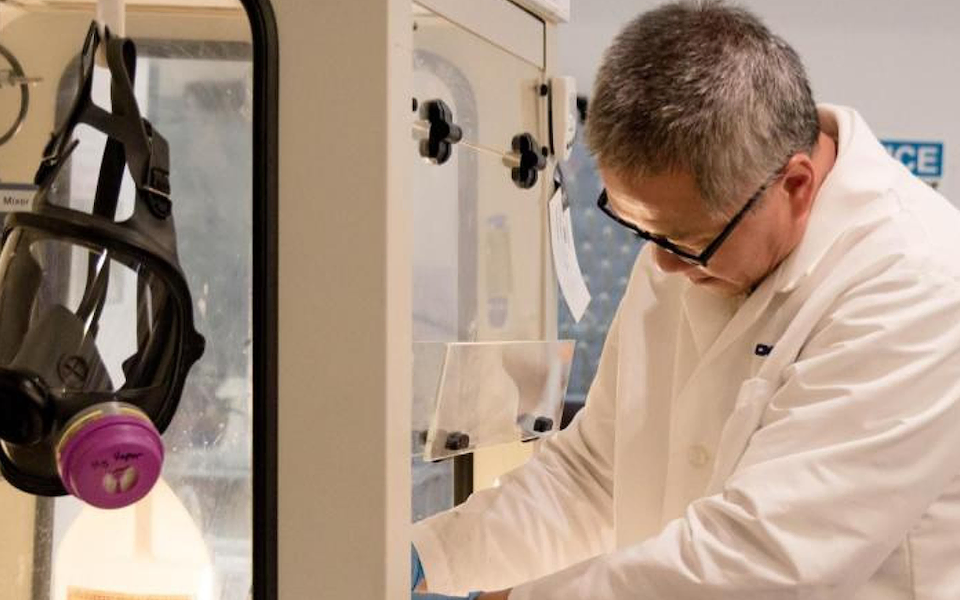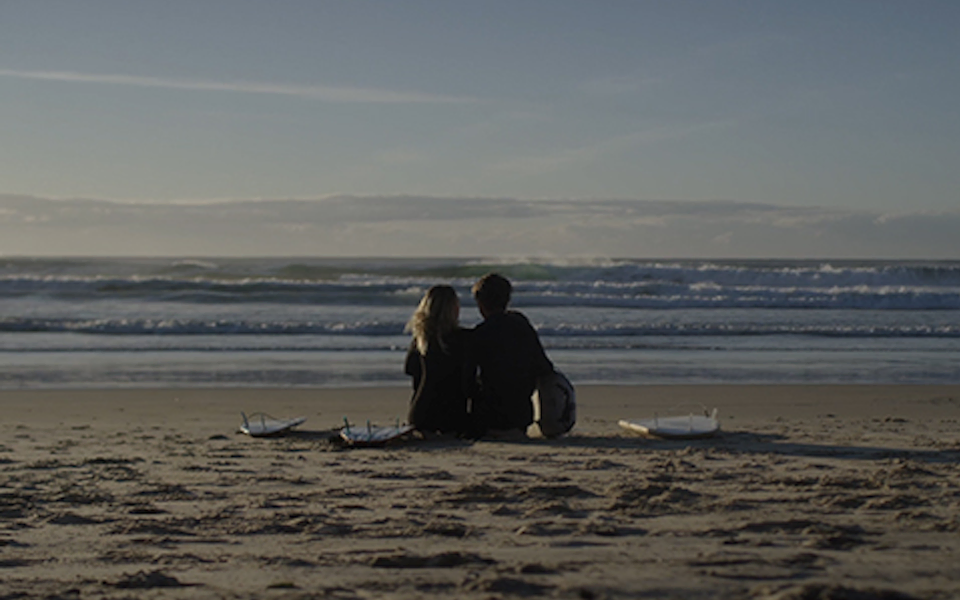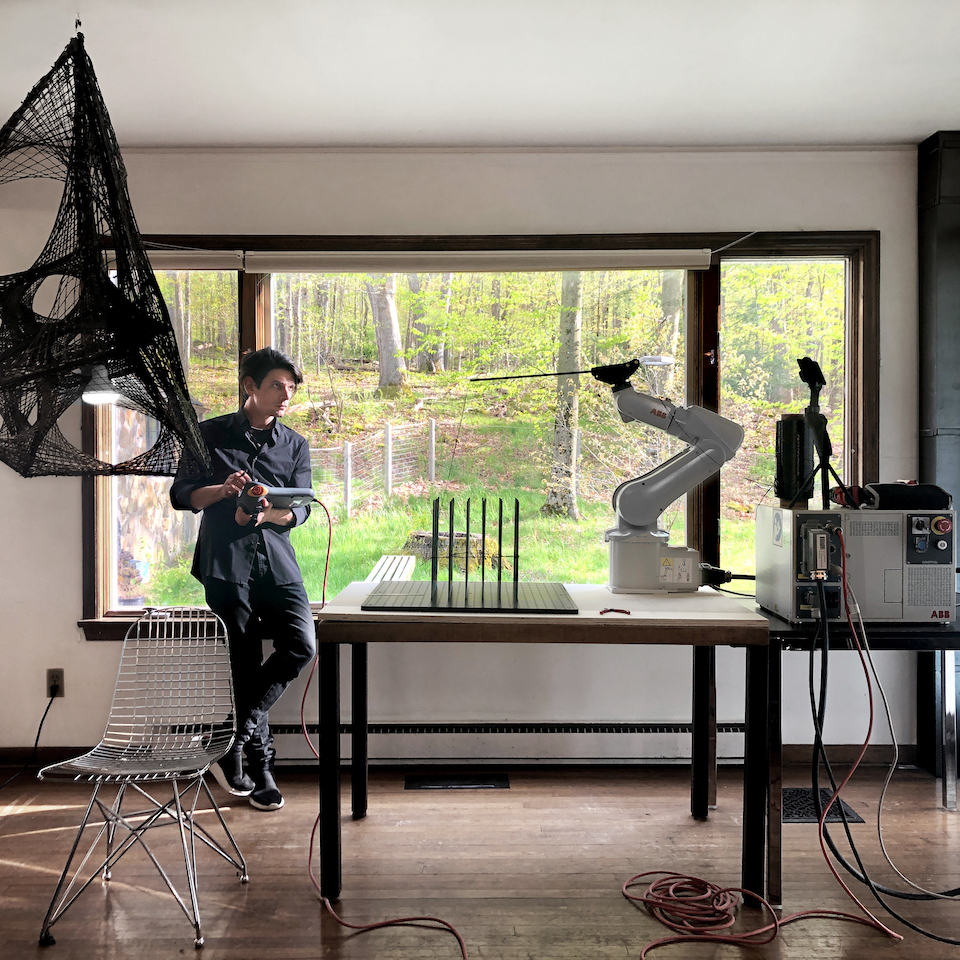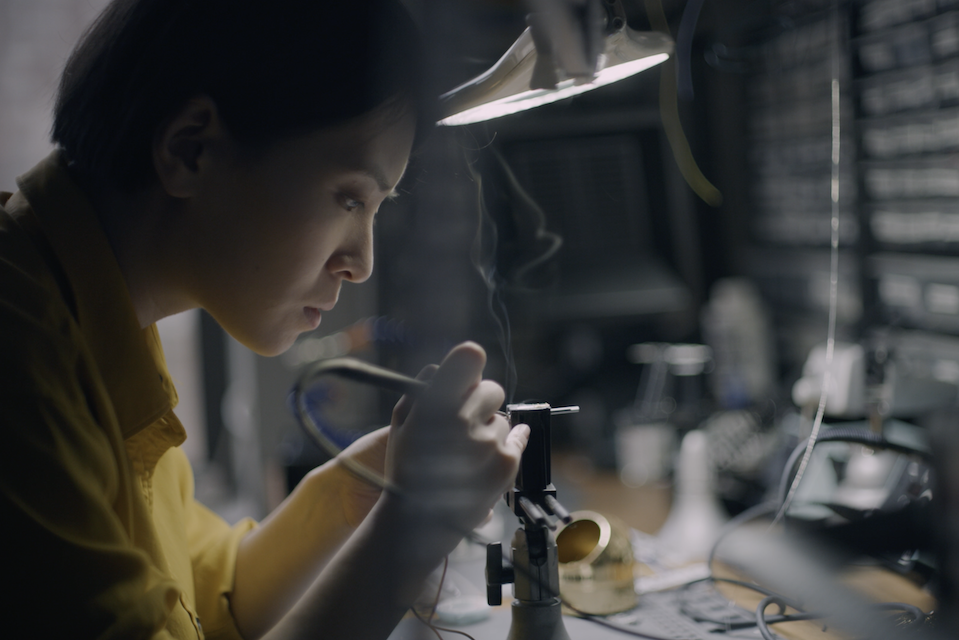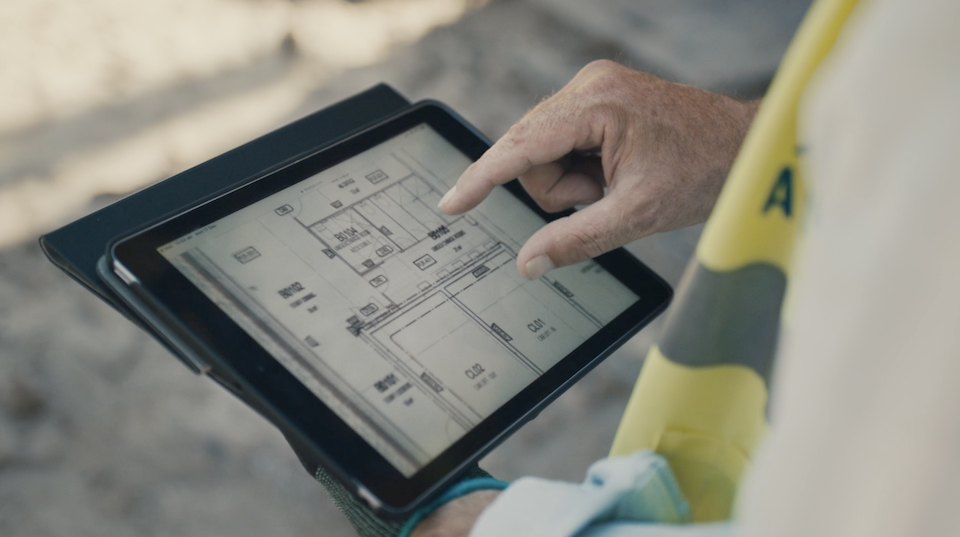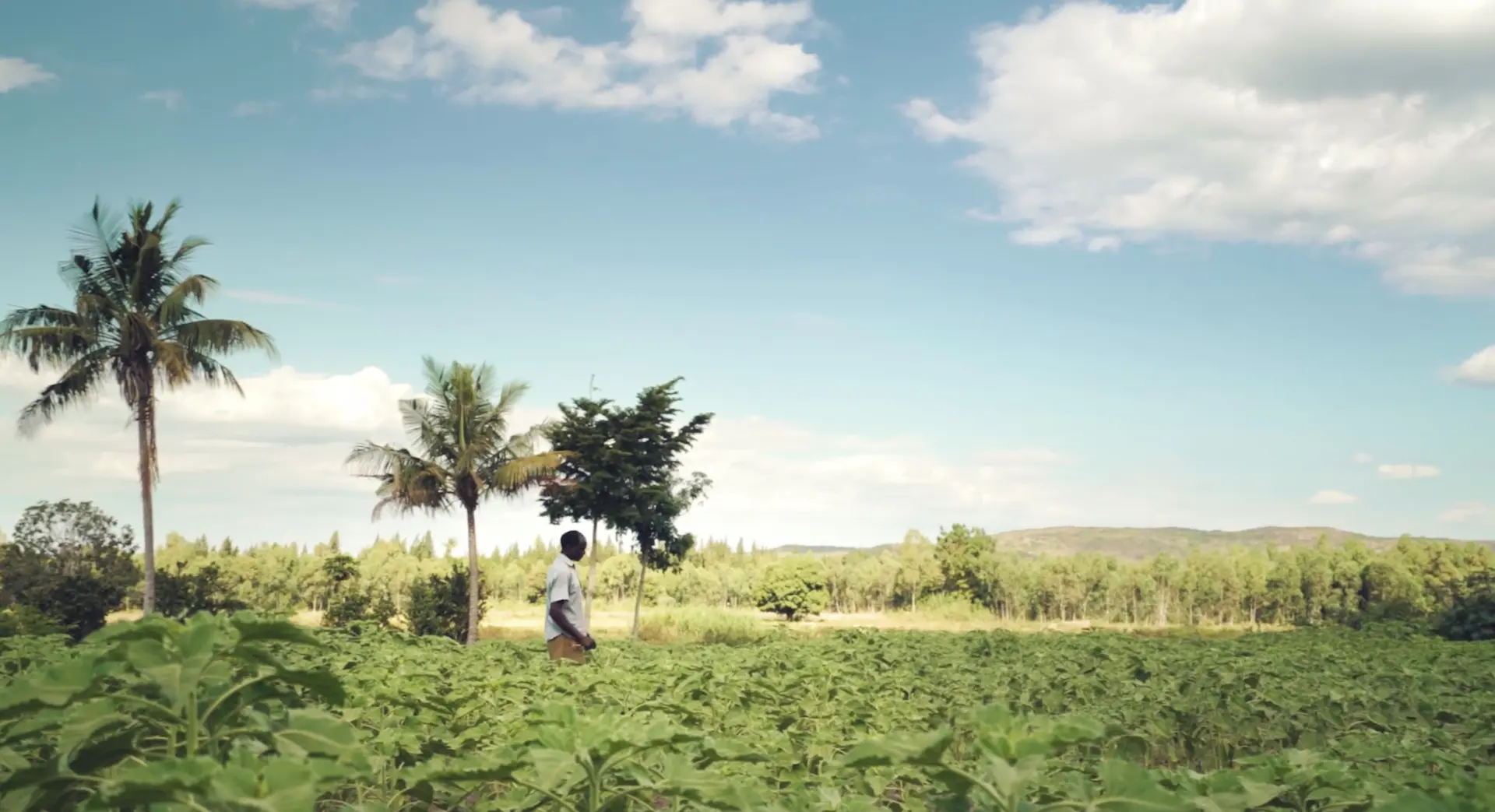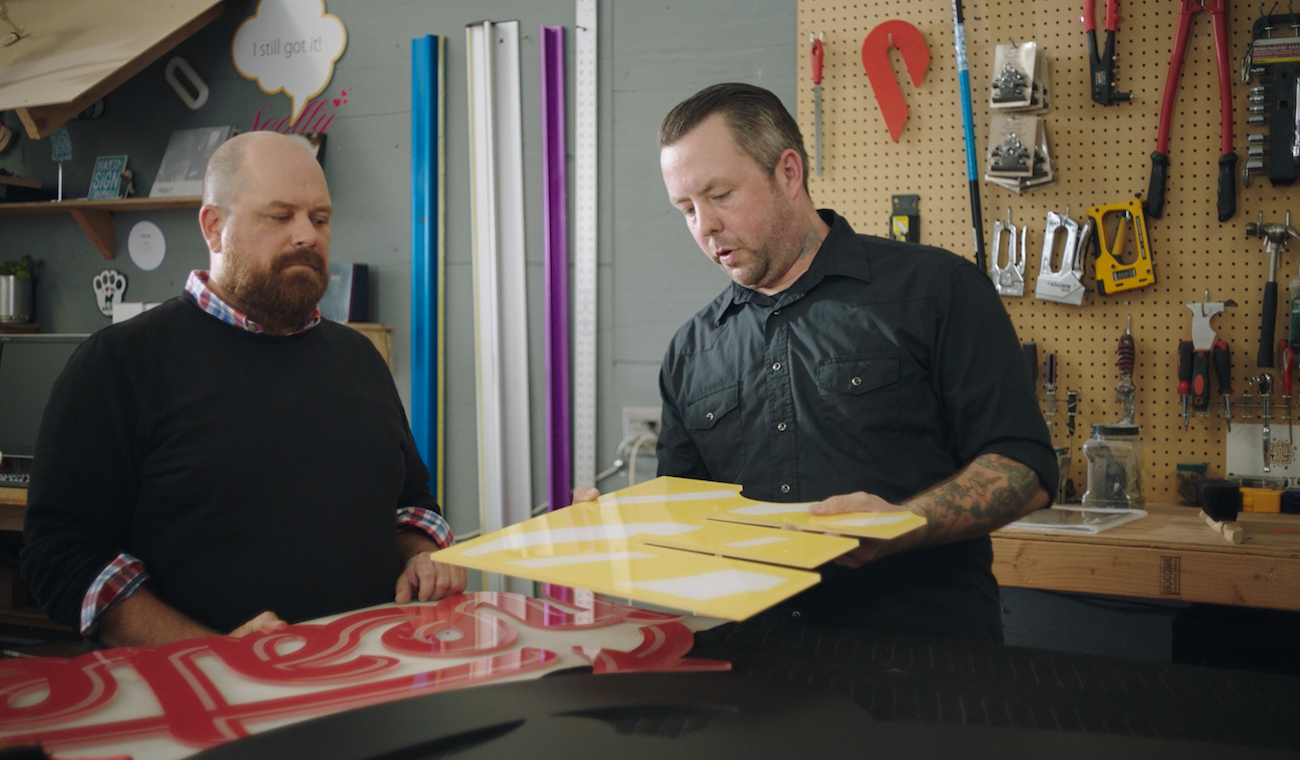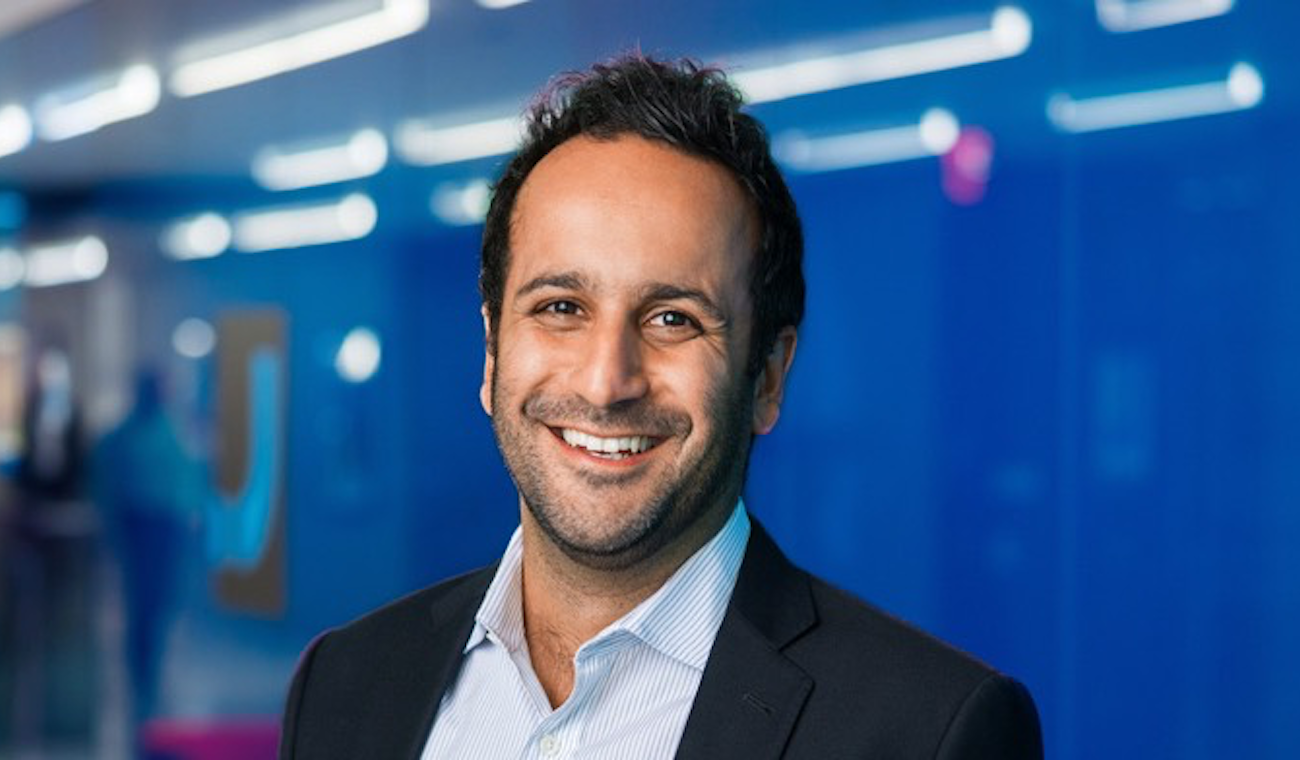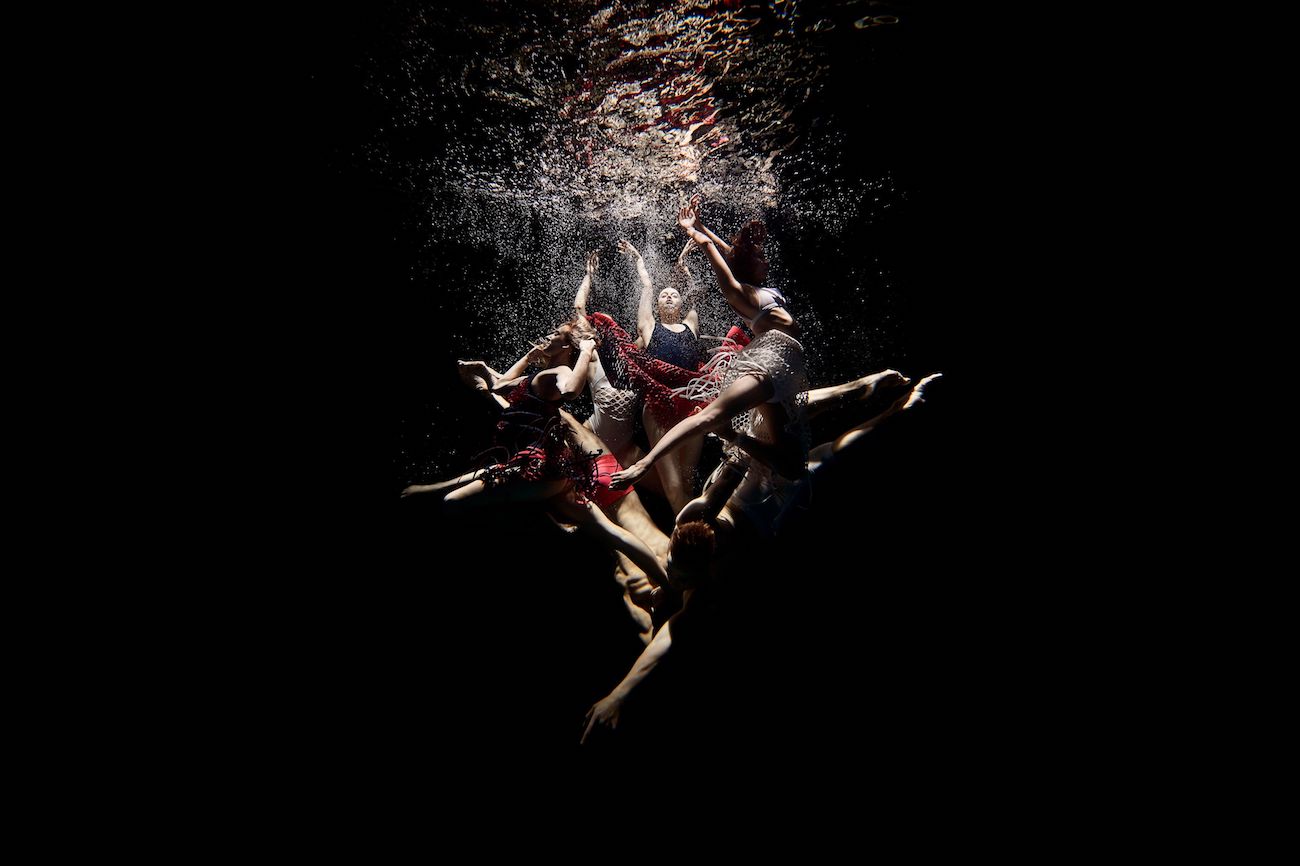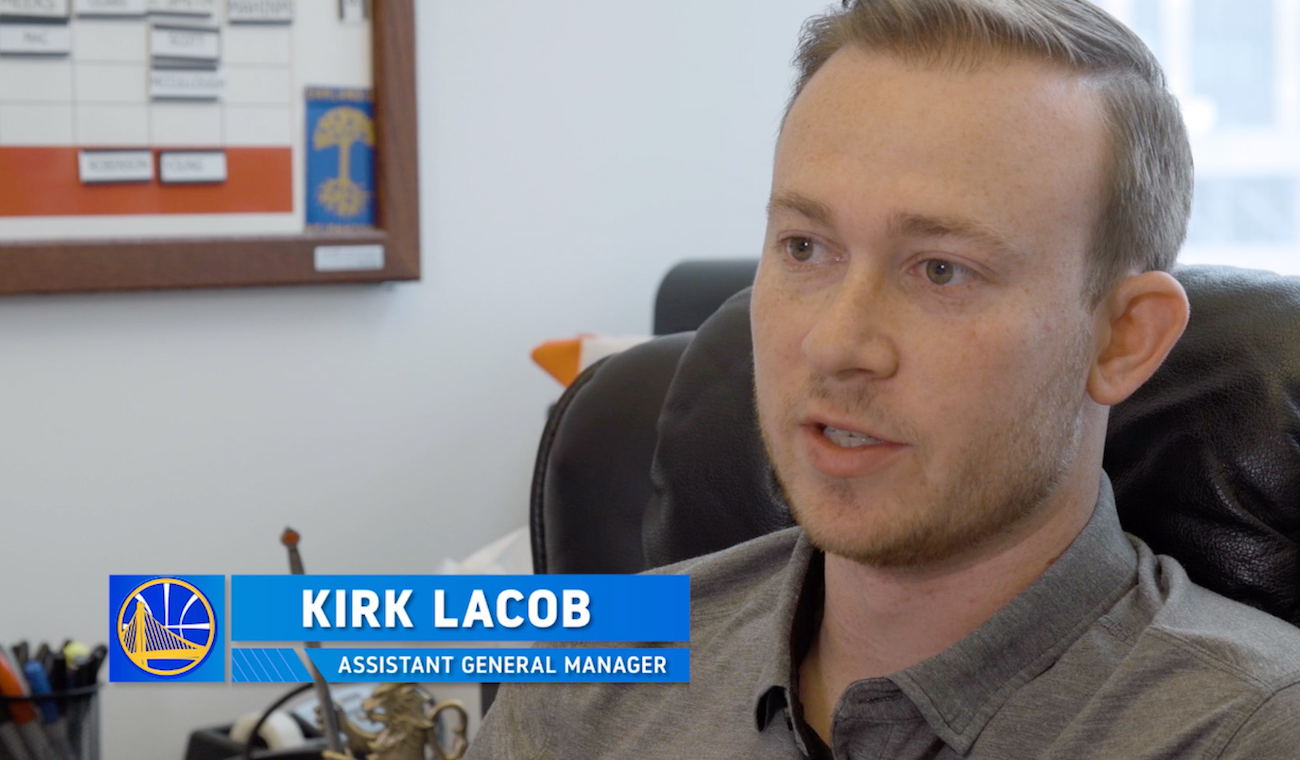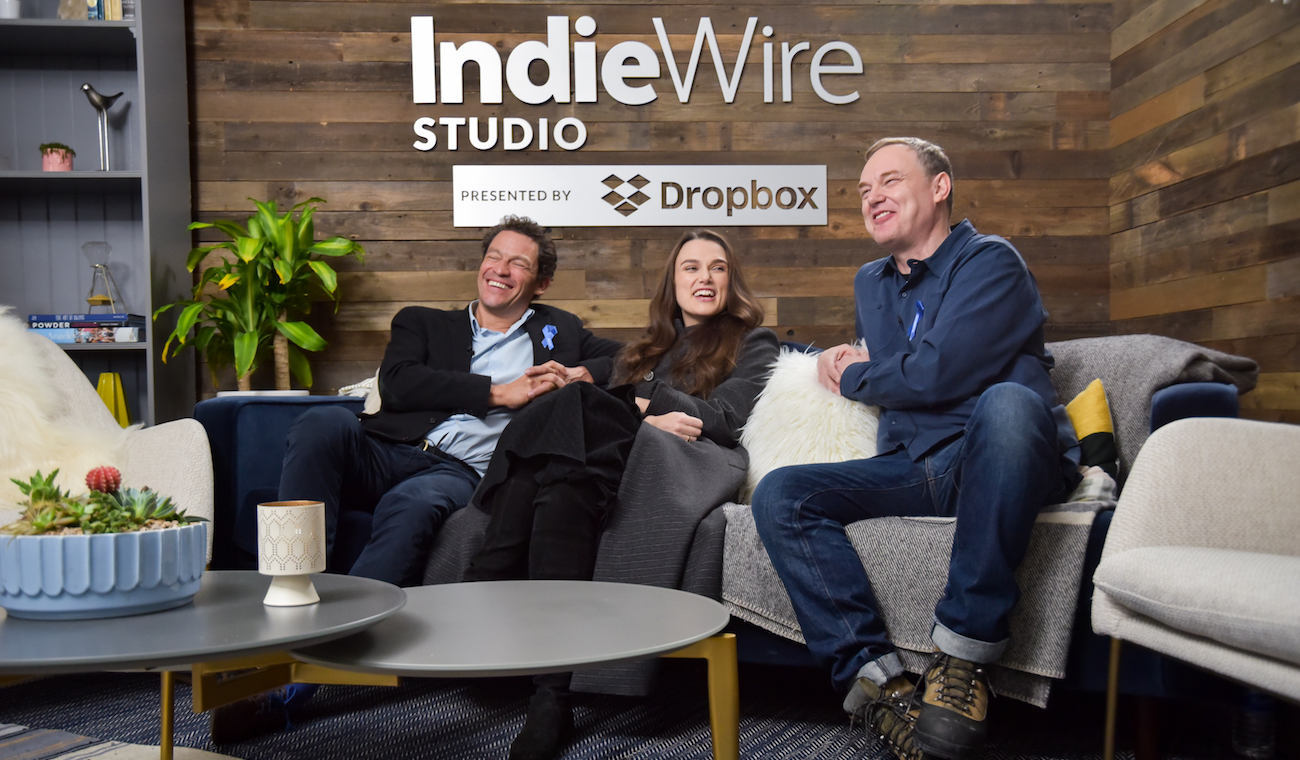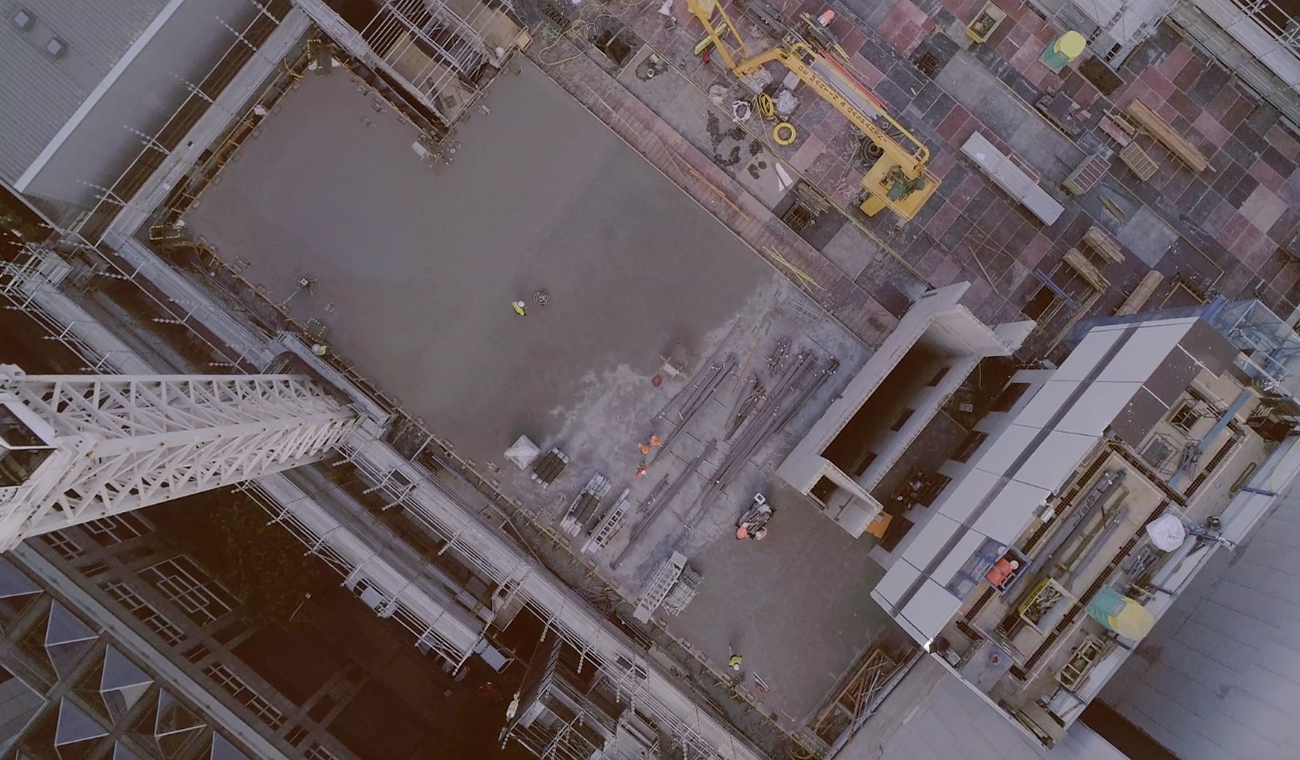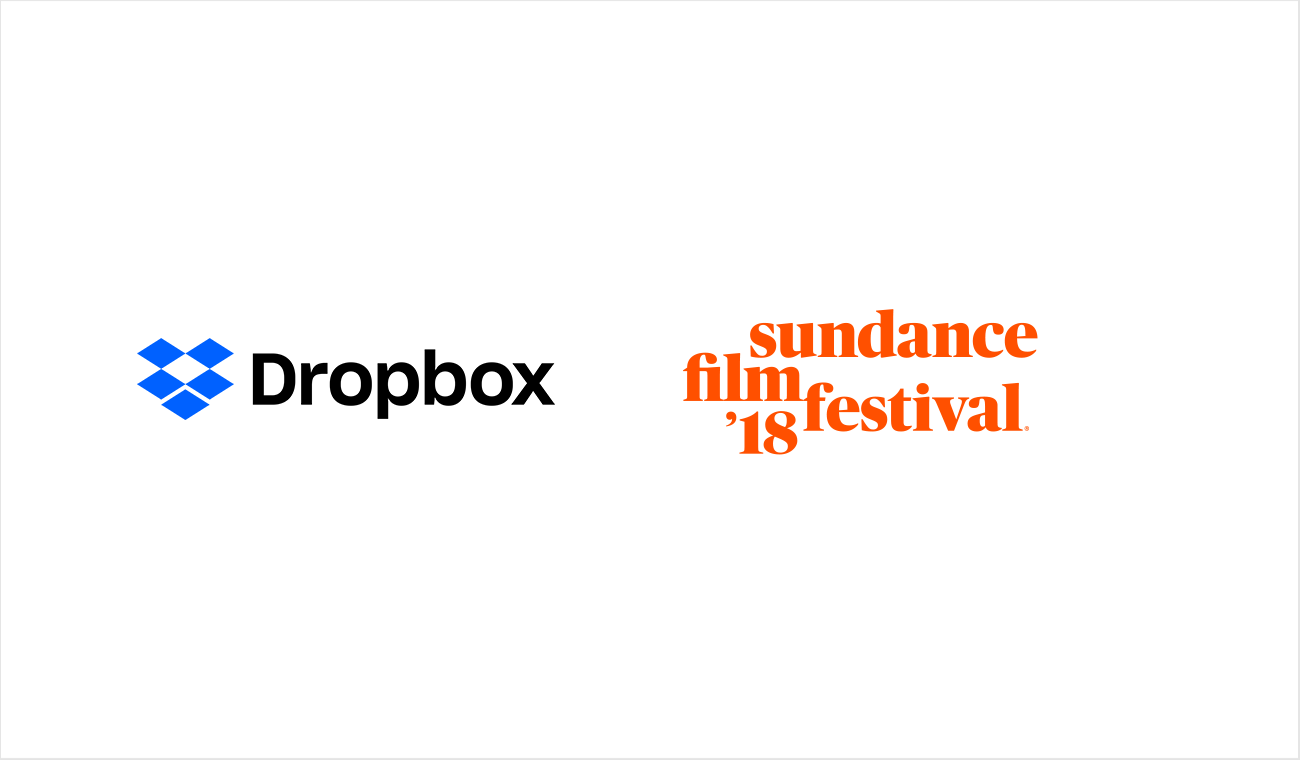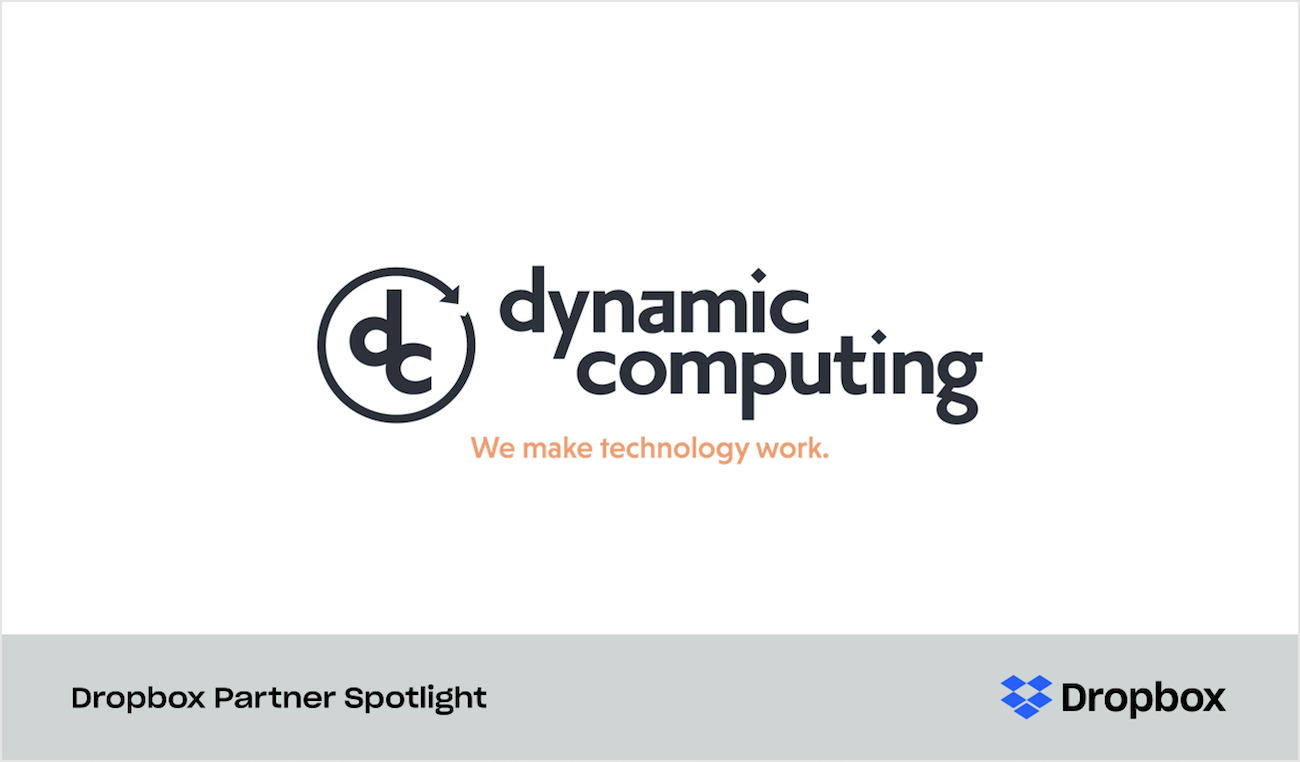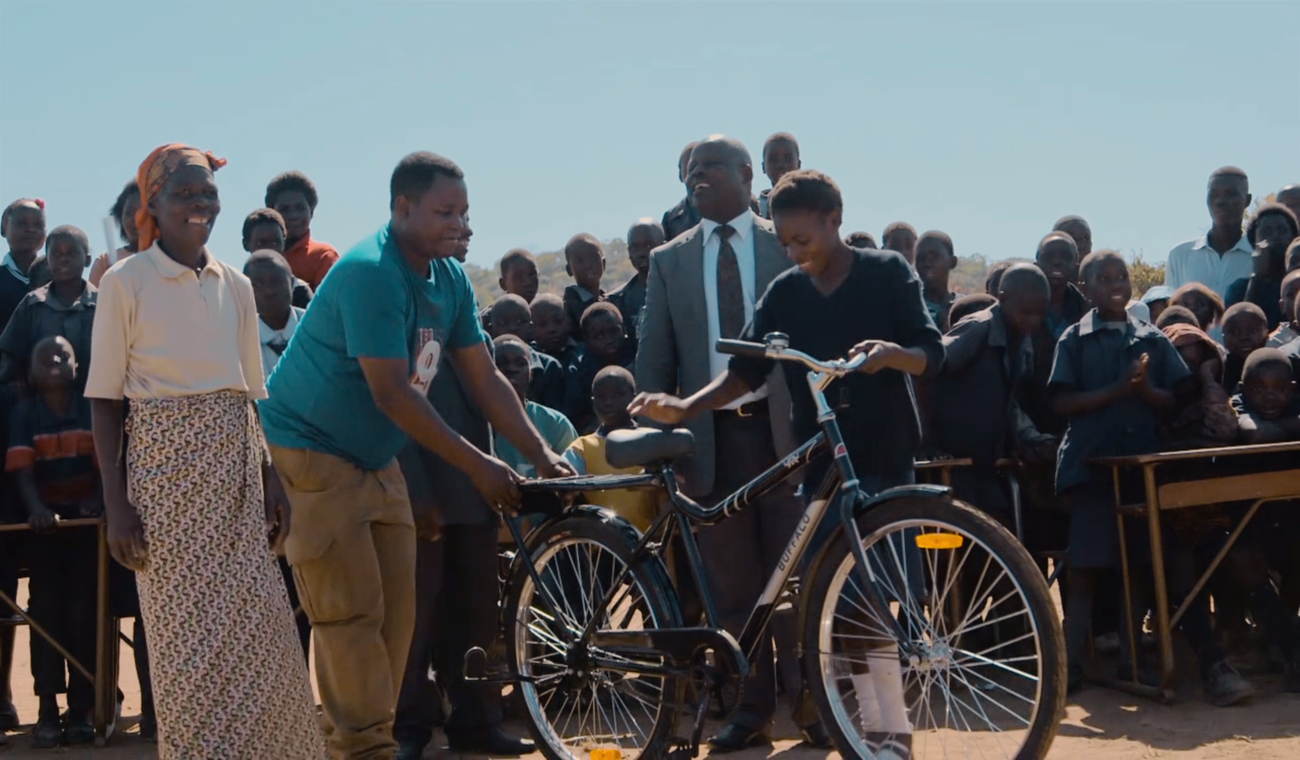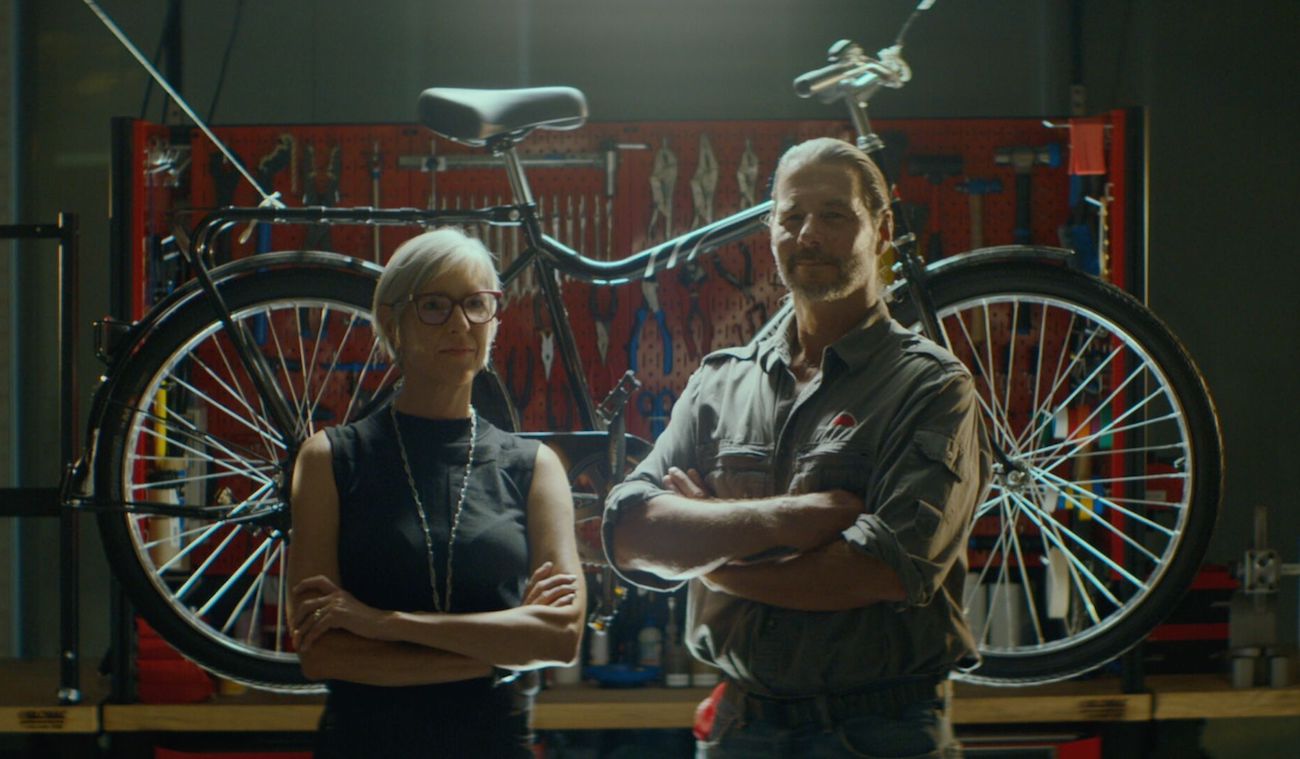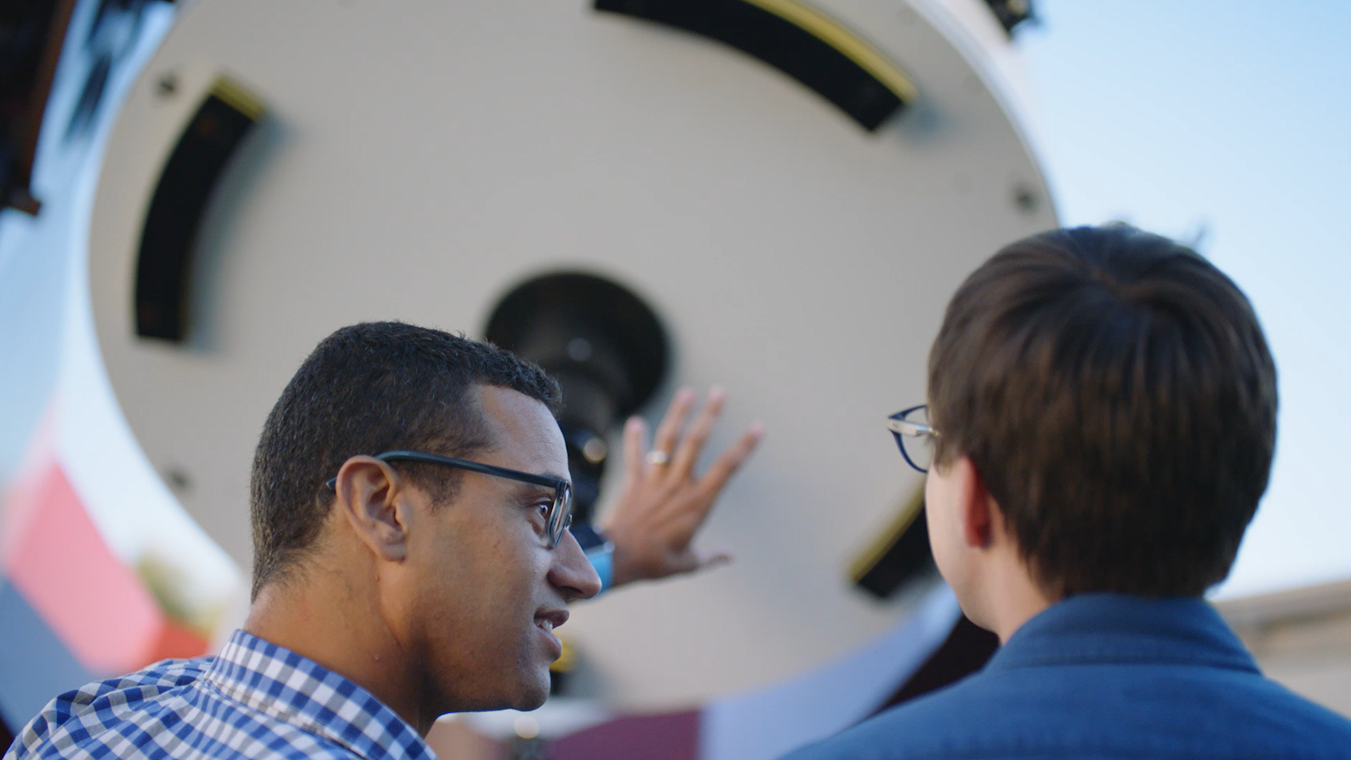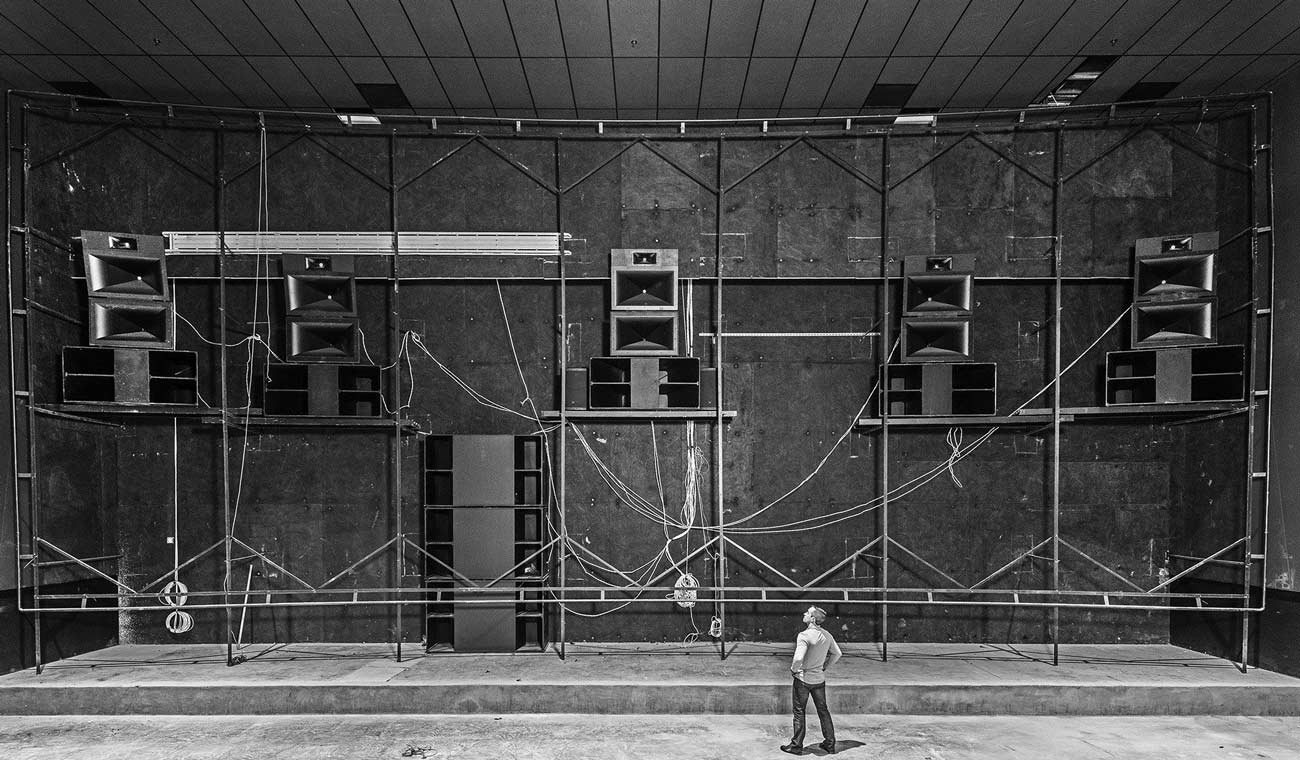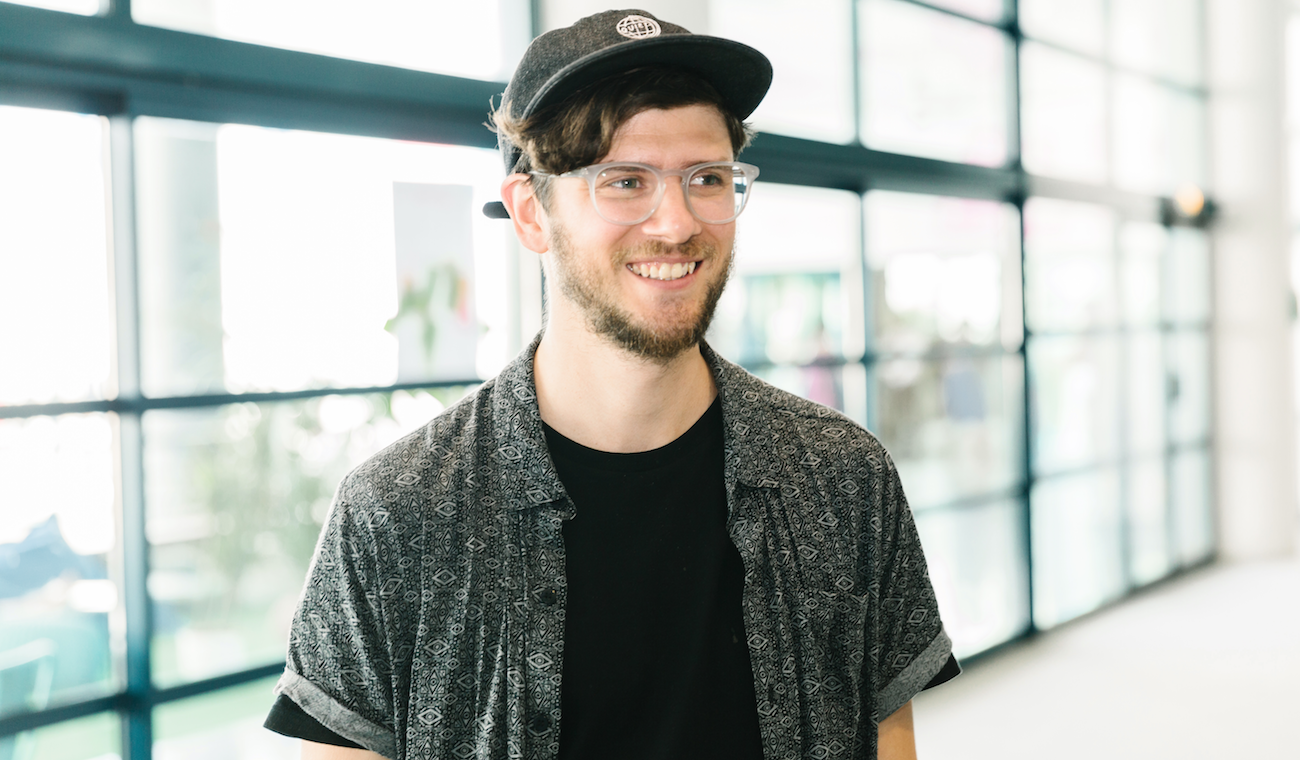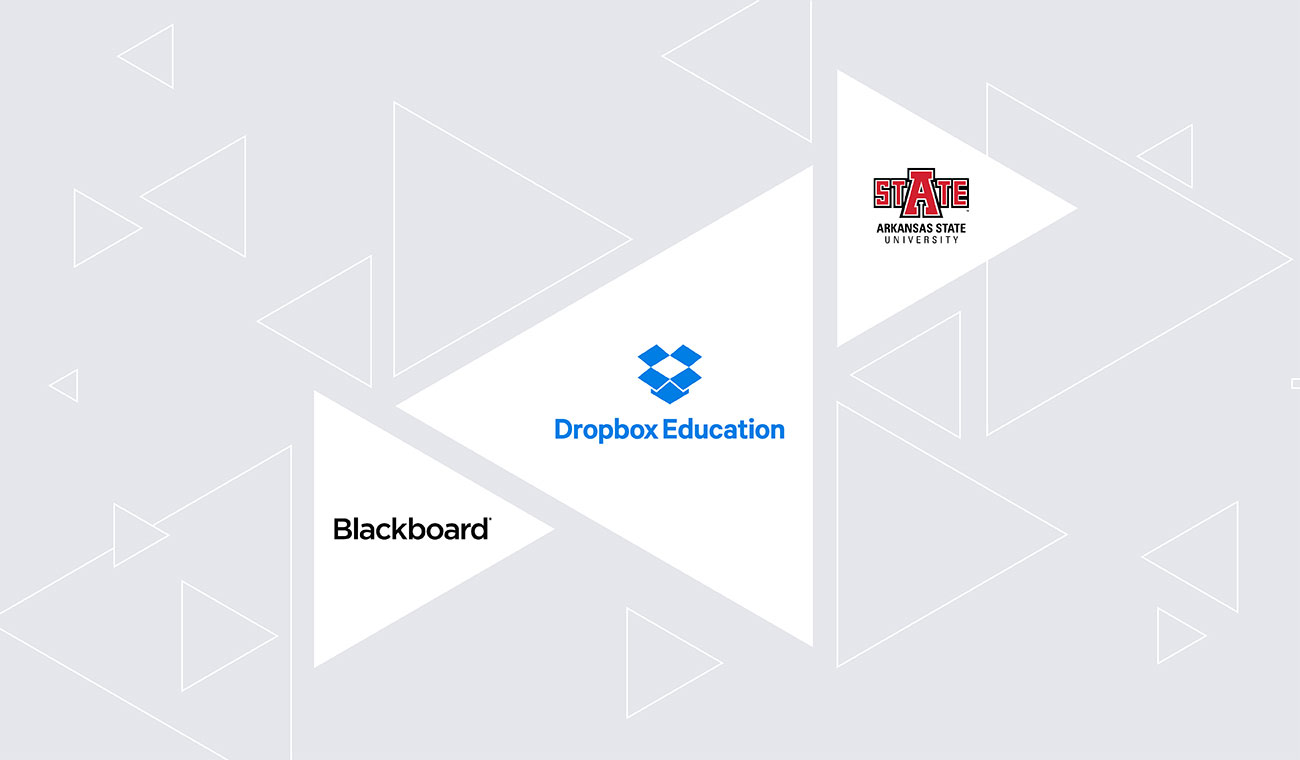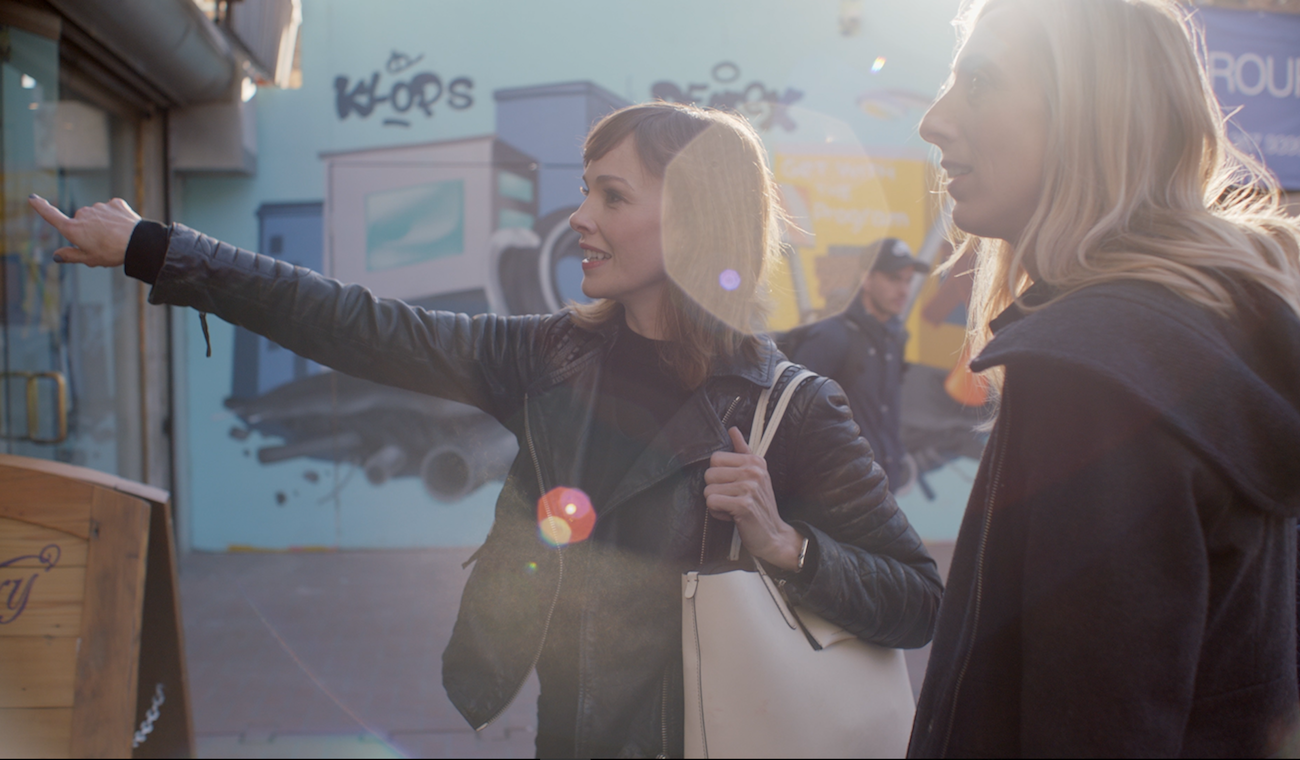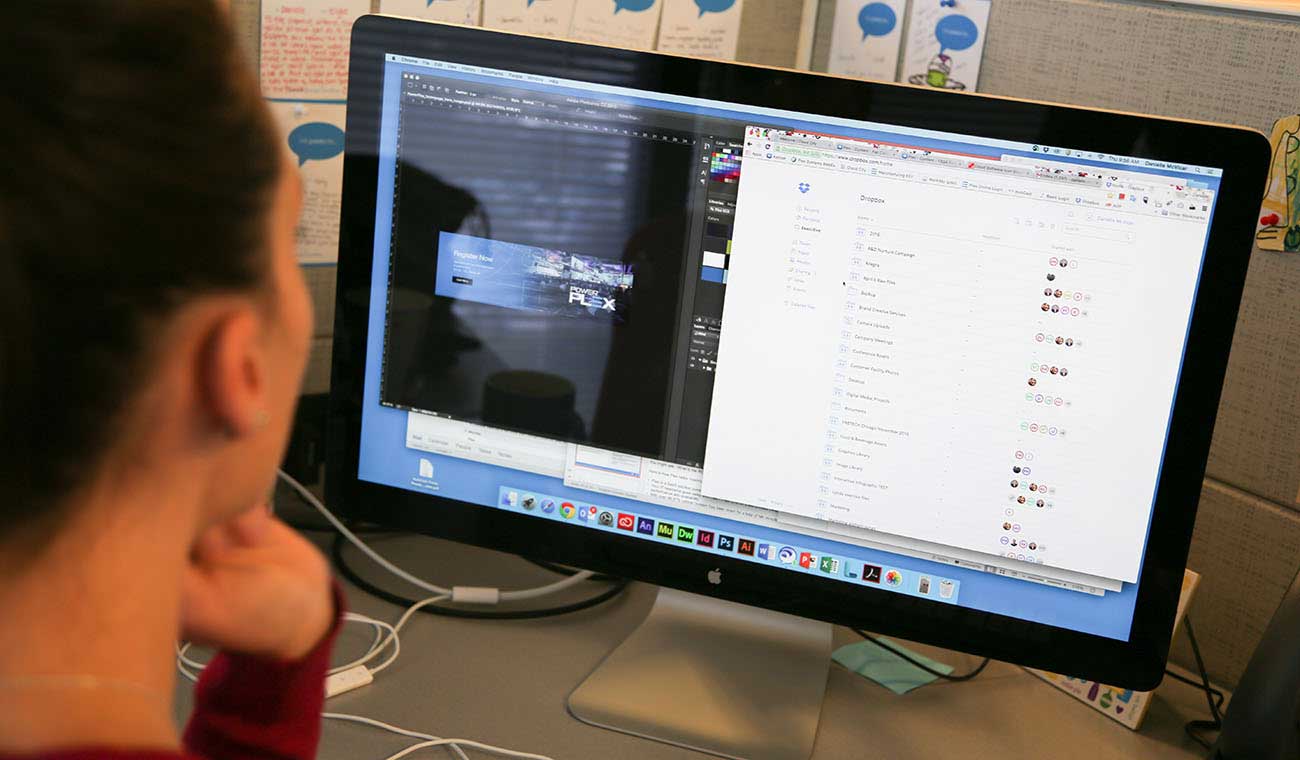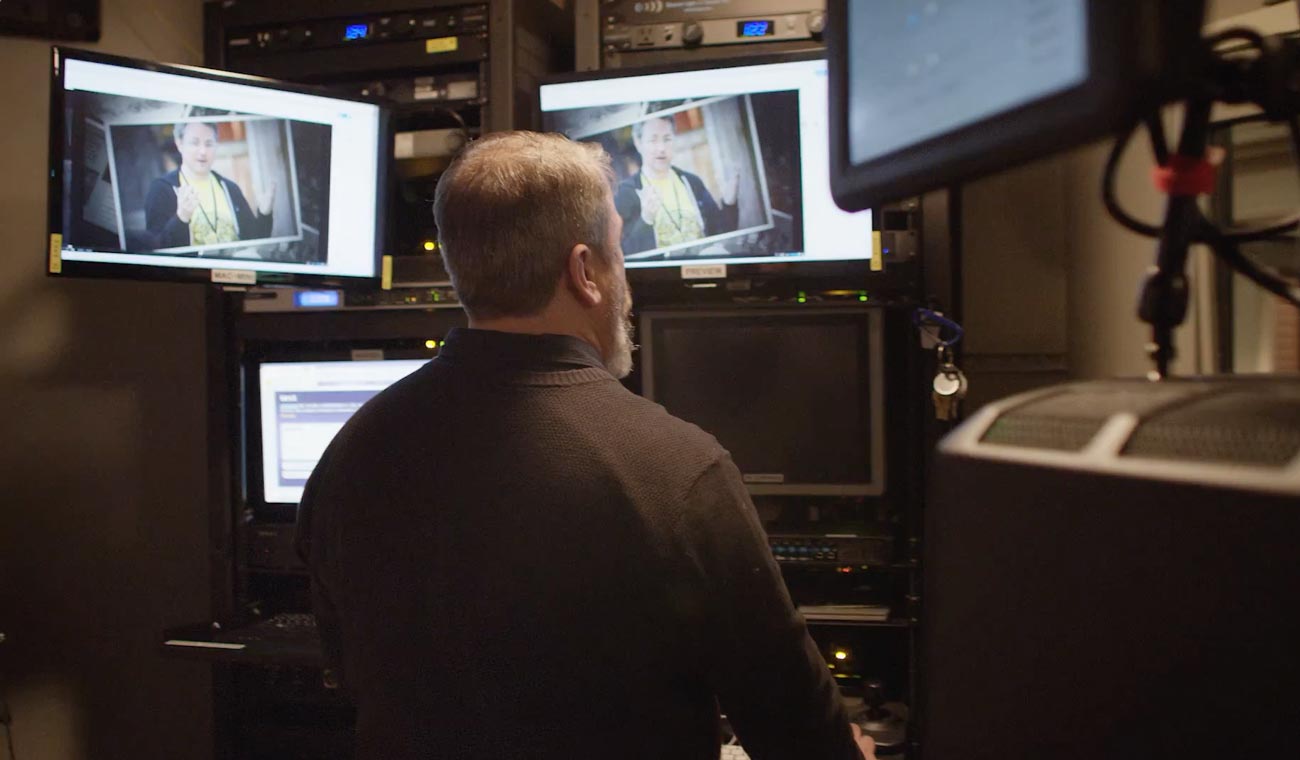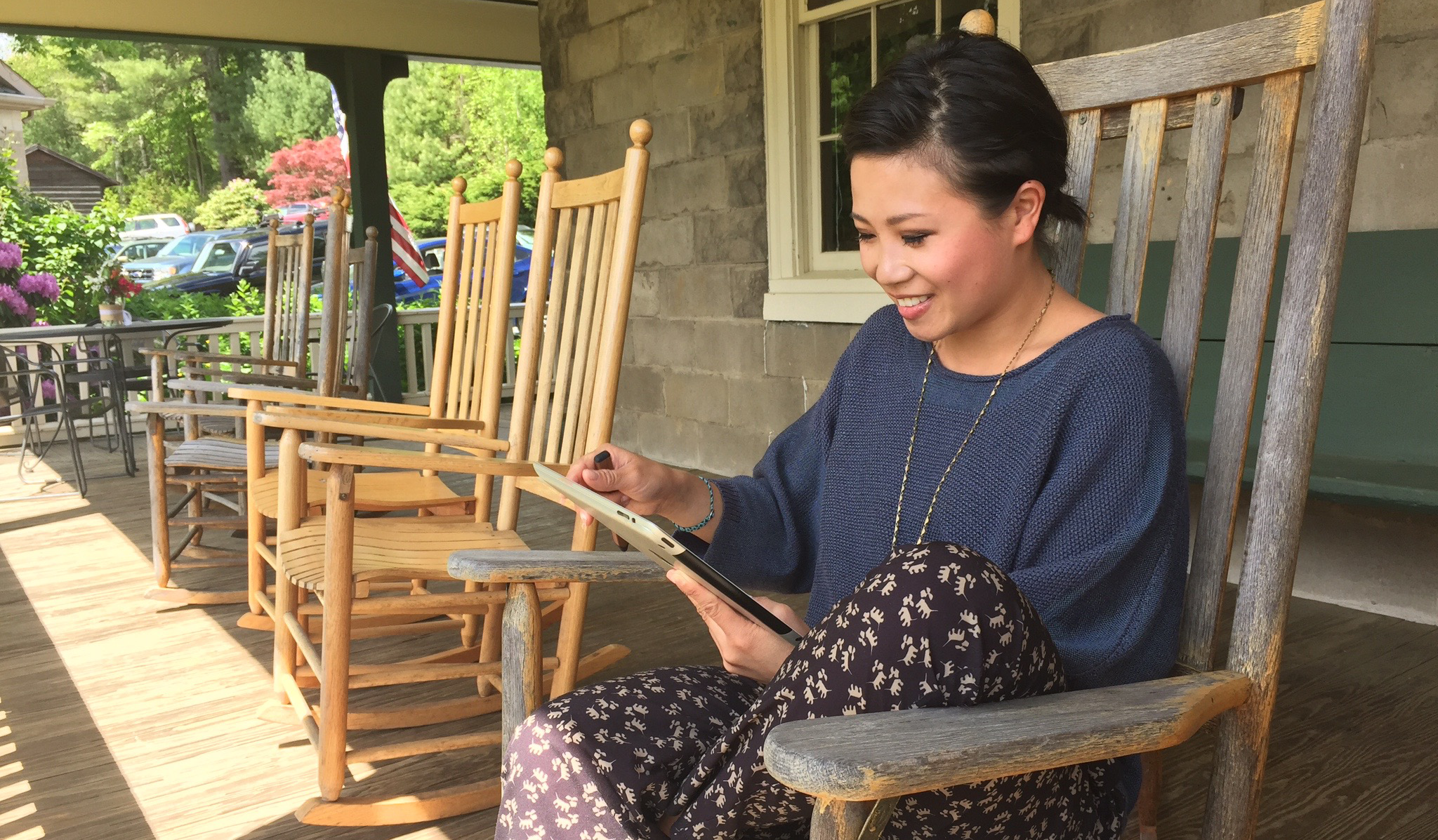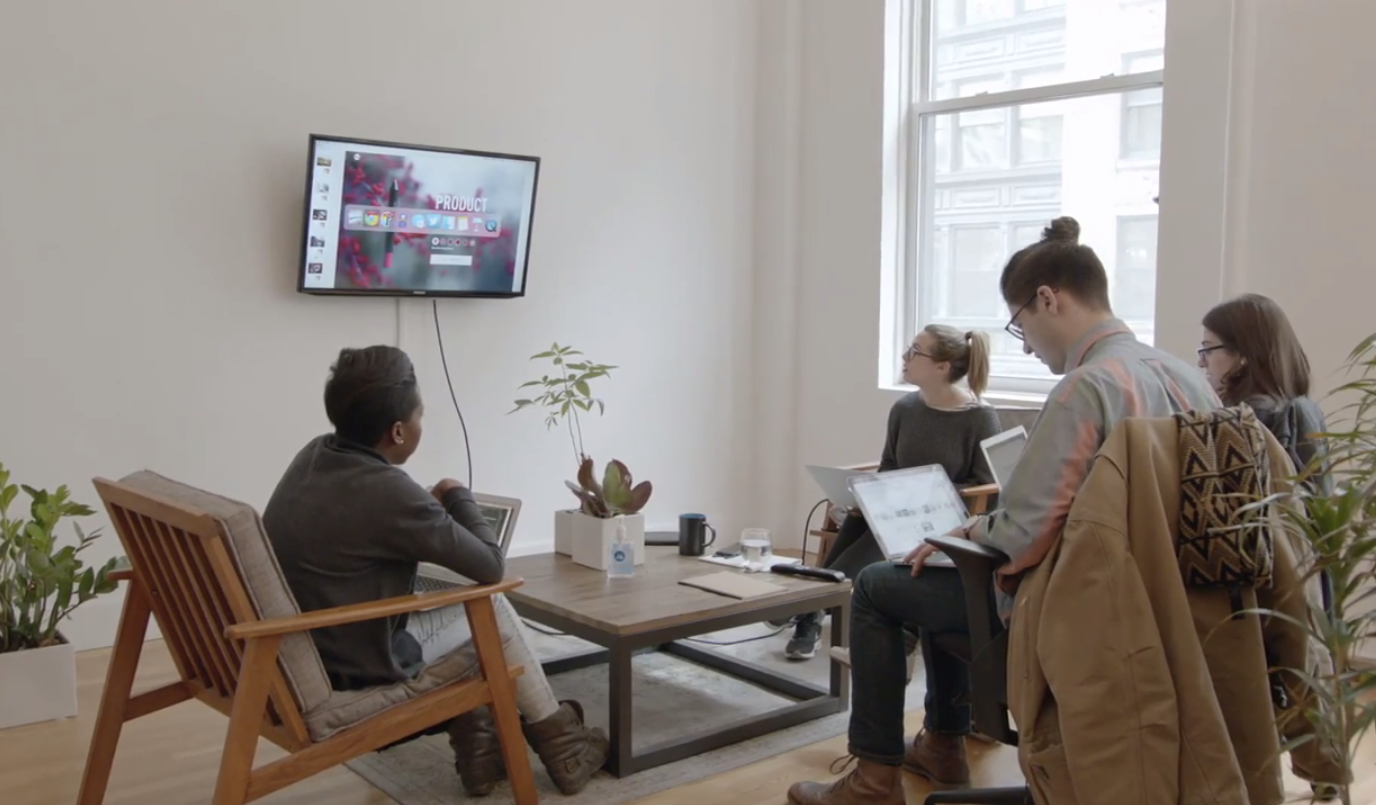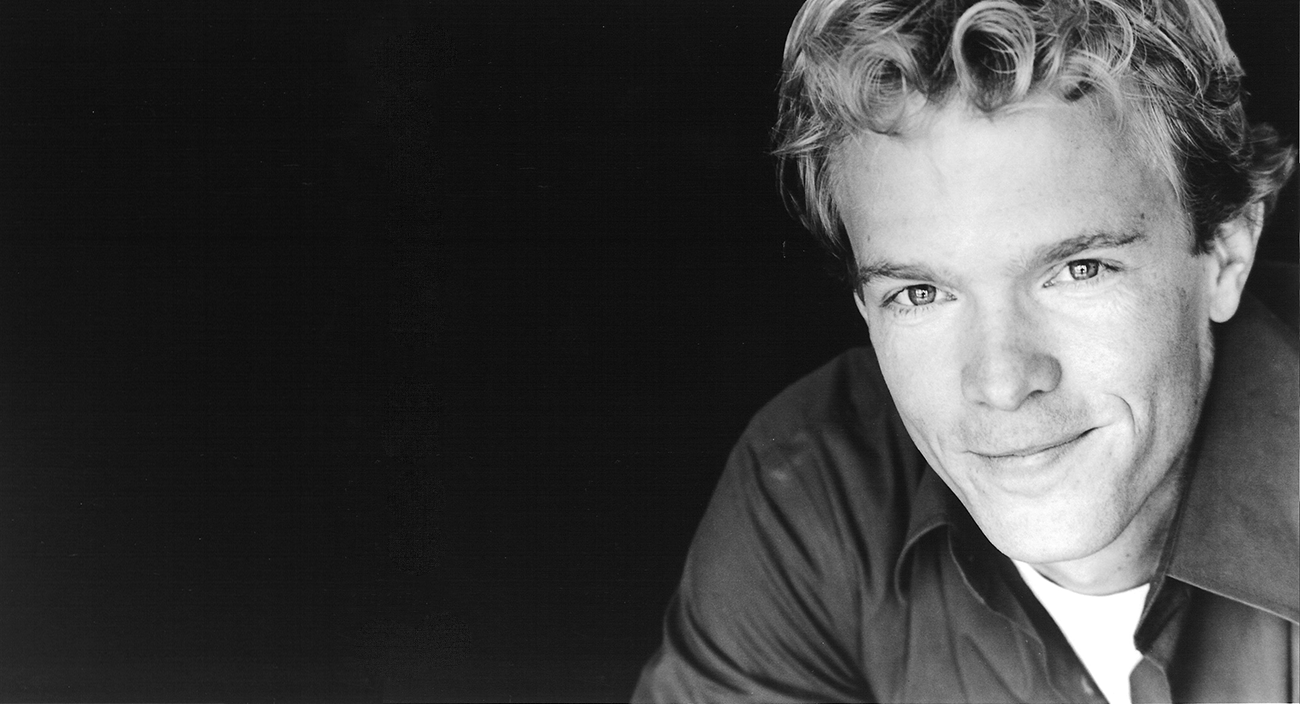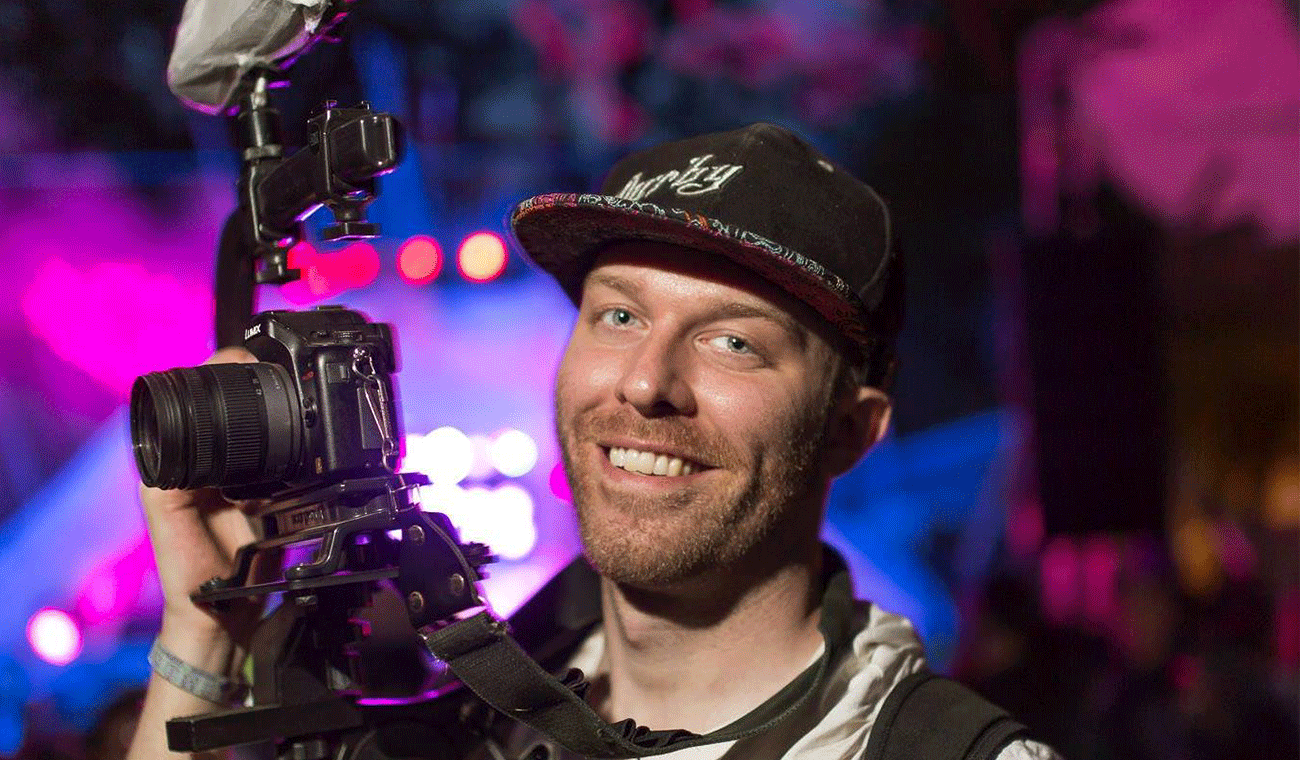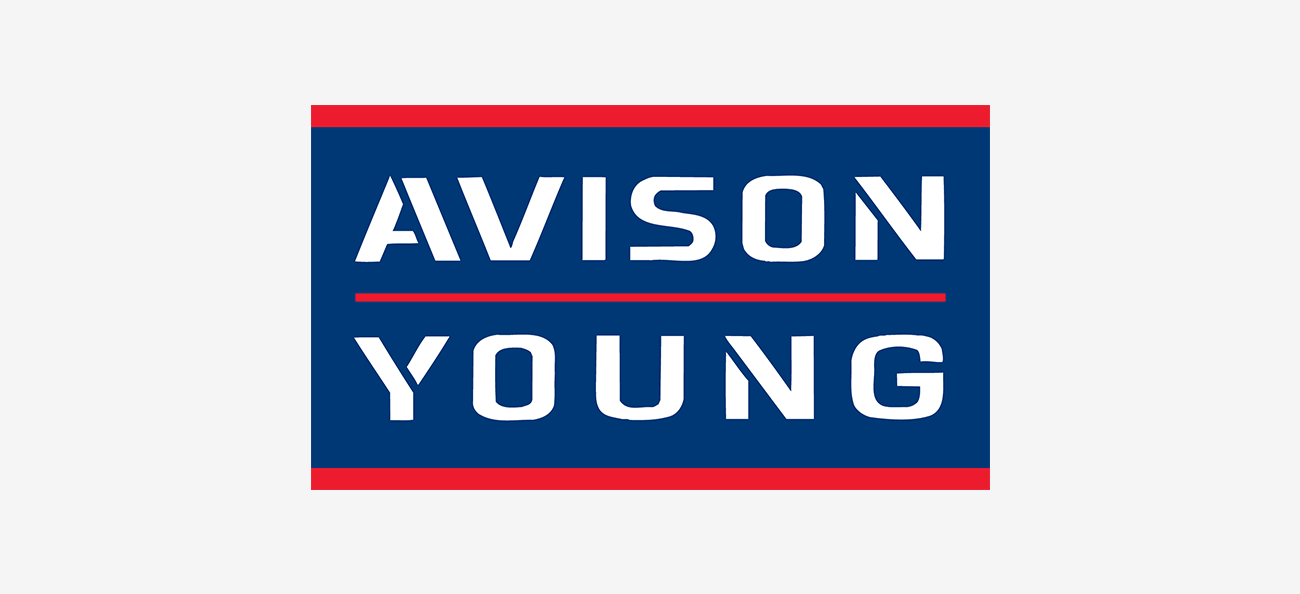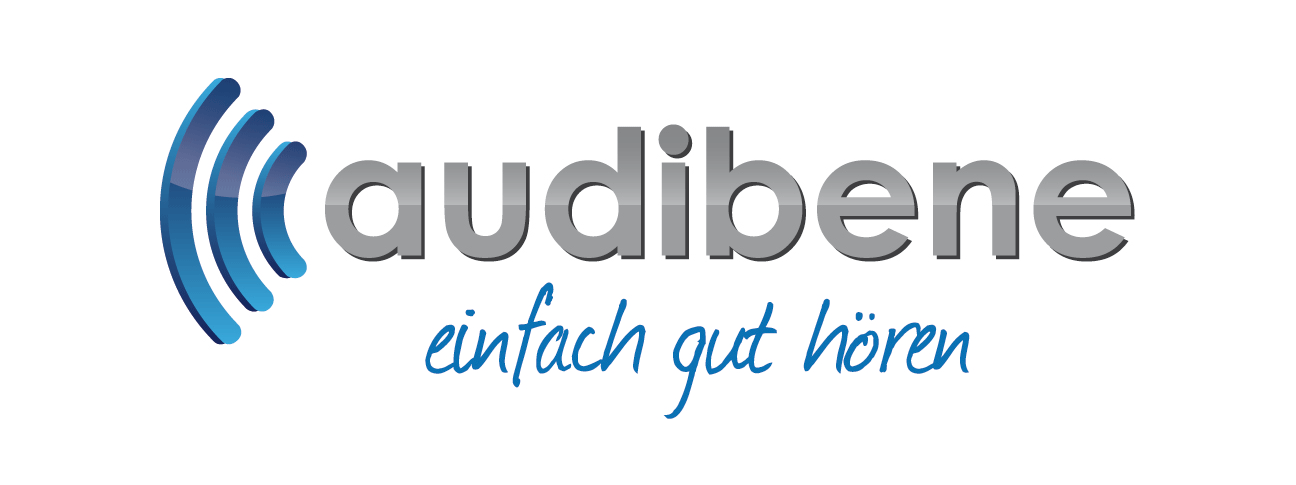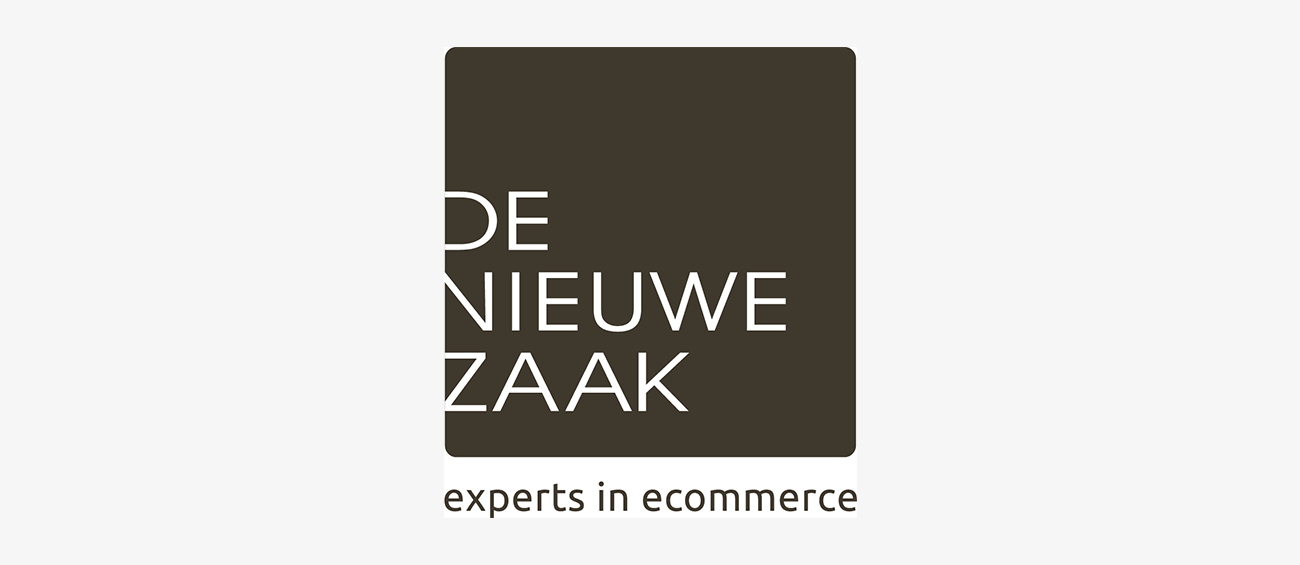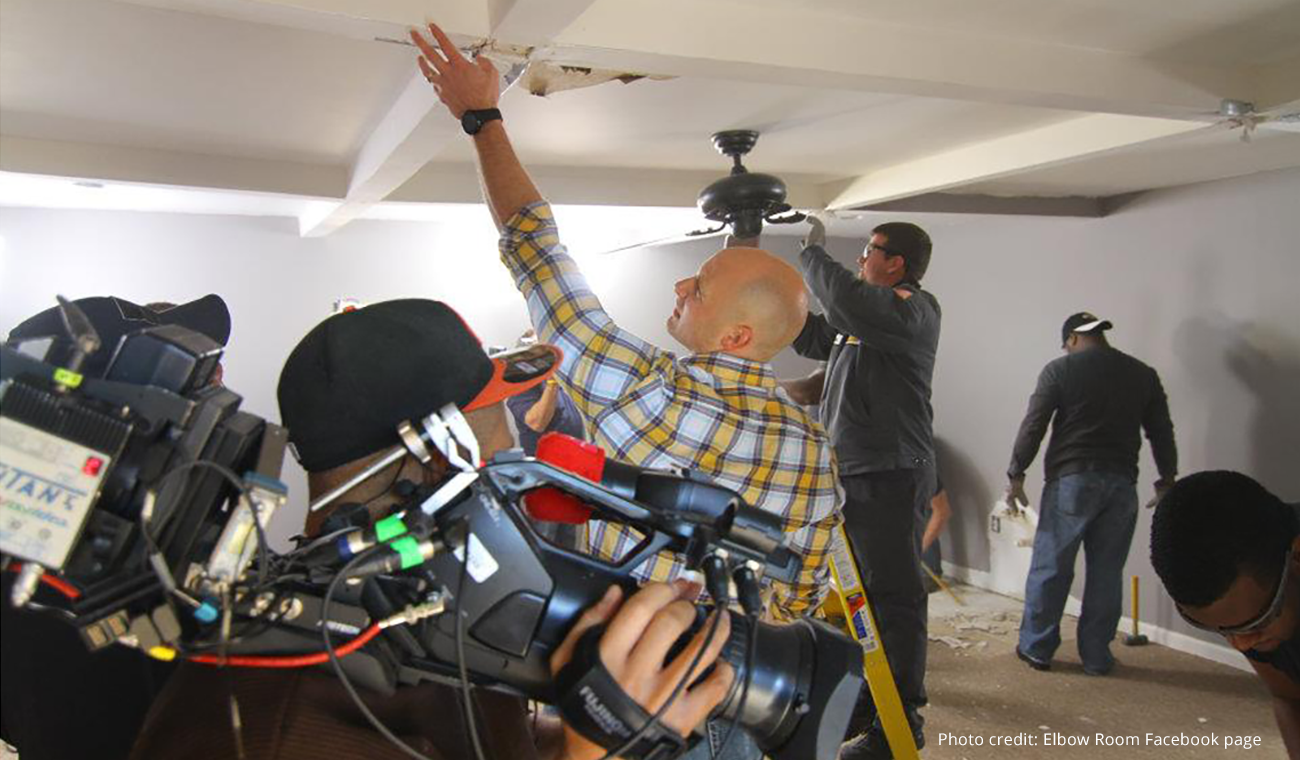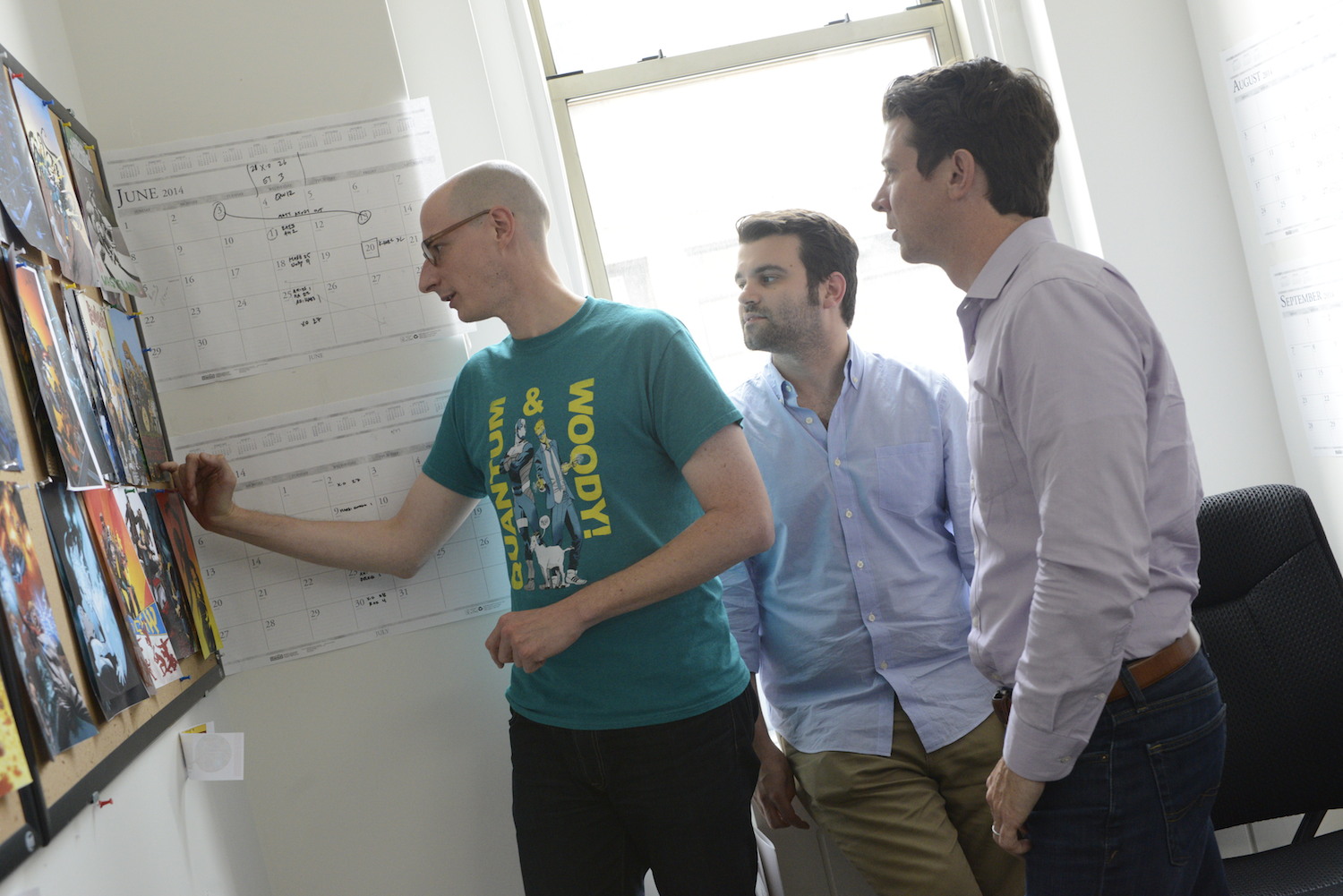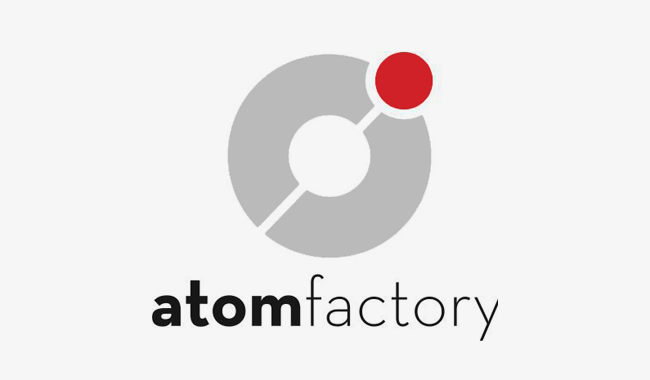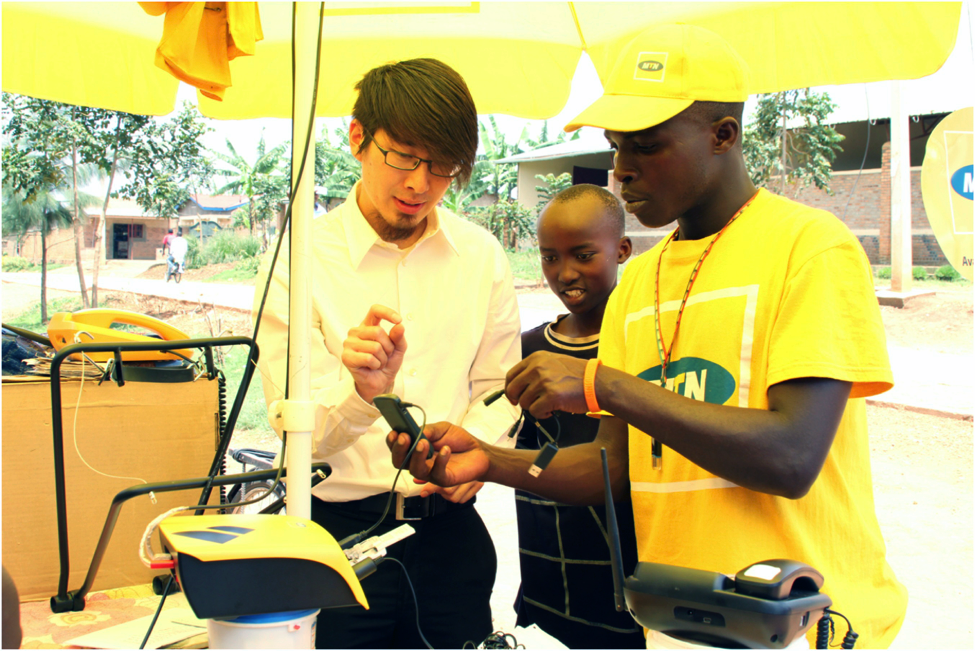
TikTok star Jarred Jermaine on his path from music producer to full-time creator
Published on November 23, 2022
For some creators on Instagram and TikTok, it’s all about the grid—the rows upon rows of squares and rectangles that act as a preview of recent posts. Before you hit follow, watch a video, or read a caption, a purposefully designed and curated grid lets you see what you’re going to get.
But head over to @itsjmaine (Insta) or @jarredjermaine (TikTok) and you’ll pretty much see the same thing, post after post: music curator and producer Jarred Jermaine Gazarian looking straight at the camera.
Save for the tell-tale brightness of a ring light illuminating his face, he’s always sitting in the same dimly lit room. You’ll also always see the same two tall houseplants and a framed painting of multi-hyphenate mega-producer Pharrell Williams behind him.
The only things that really change are his shirts—a rotation of basic, music, and novelty tees—and the album covers and video clips that float above his head. He points at each piece of media above him without breaking eye contact or saying a word.
Gazarian has built a following of millions across both platforms by highlighting the origins of—and similarities between—popular songs, viral moments, meme audio, movies, and more. In a medium known for viral dances, fast-paced commentary, and blink-and-you’ll-miss-it visual transitions, Gazarian stands out by sitting still, being quiet, and letting the audio speak for itself.
His videos, to quote one commenter, are a whole “vibe.”
“It’s kind of like I’m a teacher pointing at a whiteboard or something,” Gazarian says over Zoom. (And yup, his Zoom background is the same as his viral videos.) “I’m looking at my students, like, ‘Hey, you! You in the back? Look!’”
Gazarian’s “students” have his full attention. He’s a full-time creator now, and posts several videos a day—a cadence that Dropbox makes easy to maintain. Gazarian and his video editor have created a workflow where raw video goes in and the final version comes out ready to post, all within the platform.
And even when his videos get more complex—some can have three or more videos or sound files to edit—Dropbox helps Gazarian and his editor stay organized and keep things moving, with less back and forth over which video goes where.
“My videos are pretty big files because it comes from my phone,” he explains. “I have a folder of the dates of the video and just unload all my files into that folder for that particular day so it’s nice and organized.”
The end result is music education for the extremely online. (It’s also an opportunity to flex for those of us who did in fact clock the more obscure samples in Beyoncé’s Renaissance way before Gazarian made his video about it.)
His style has even become a sort of meme for creators across social media, including mainstream acts like nu metal rockers Papa Roach. (The comments on that video range from congratulatory “You made its!” to some expressing shock over hearing Gazarian’s deep voice for the first time.)
But Gazarian is far from being an overnight success. His path to becoming a TikTok star is an example of how many enter the creator economy: by bringing an offline passion to the online masses.
Building a sound foundation
While some may find their focus by accident, it was pretty clear from the jump what Gazarian’s would be.
“[Music] is in my blood,” he says. Many members of his family are musicians; he started making beats as a teen to copy an older cousin he admired.
What started as a way to keep up with the big kids became a singular passion. When he wasn’t producing music for folks on his block in the Bay Area, Gazarian was listening to, and interning for, KMEL. The eclectic radio station played everything from neo soul to hyphy—a type of hip-hop that’s distinctly Bay.
Thanks to some nudging from a friend, Gazarian decided to move to Los Angeles to further pursue his dream of becoming a music producer. He joined Power 106 FM’s street team as a way to network, and found himself in the midst of another music wave—this time the Jerk movement, a style of rap made for a dance called the jerk.
"You can’t force the world to love [what you’re doing]. The best things just happen organically."
Gazarian eventually left Power 106 and started focusing on producing R&B music. There was something different about the music he was hearing on the radio. It wasn’t the Motown and disco R&B of the ’60s and ’70s, and it wasn’t the new jack swing or smooth soul sounds of the ’80s and ’90s. It was something else entirely—and it needed a name, like hyphy and jerk before it.
He landed on RnBass as the name for the movement and the platform he made to highlight that 2010s sound—more 808 bass and turn-up lyrics than previous generations had grown up hearing.
“The first thing I did is create a SoundCloud to make everybody believe that RnBass is a real thing,” he says. “I started consolidating all the songs I felt could fit within RnBass. I made an Instagram account and was just tagging RnBass on everything. Like, ‘Yo, have you heard this dope new RnBass track from blah blah blah?’“
Gazarian became a one-man A&R team and sound evangelist. Popular producer DJ Mustard became an RnBass disciple and used it in some of his biggest hits of the time.
In the eight years Gazarian worked on RnBass, “I probably promoted hundreds of artists on YouTube, SoundCloud, and social media,” he says. But the sound never took off the way previous music movements he witnessed had.
“It was really frustrating,” he says now, “because every day I was putting all my energy to try and make RnBass the biggest thing it could be. [But] you can’t force the world to love [what you’re doing]. The best things just happen organically.”
Becoming ‘CEO of music and audio knowledge’
Being a social media creator “was nowhere in sight” for Gazarian when he posted his first video on Instagram in the early days of the pandemic.
“During quarantine, RnBass was kind of on autopilot,” he explains. “RnBass pivoted my brain to super R&B mode, but the truth is, I’ve been a fan of every genre forever. So I was bored at home and I [thought], What am I actually good at? I’ve tried everything and I would say my biggest skill is my ear. I’m really musical and I know a lot of stuff.”
With those two things in mind, Gazarian decided to do what a lot of people were doing back then: making videos and posting them online to pass the uncertain time. He wrote down 30 video ideas and committed to doing all 30. Those first ones weren’t hits, to put it mildly.
“I got like 200 views. I’m like, ‘Man, this sucks,’” he recalls, laughing. “And then, boom, I woke up to like 500,000 views on one post.”
In that video, Gazarian pointed out that 2017's “Something New” by Wiz Khalifa featuring Ty Dolla $ign sampled ’80s jam “Computer Love” by ZAAP.
“When I wrote it down, I was like, Man, everyone knows this. This is actually dumb. I feel dumb for writing this,” he says. “[But] it just hit right on the money. A lot of people didn’t know that. I was surprised, and thought, Okay, I think I’m gonna do more of these because it’s fun.”
The success of “Something New”/”Computer Love” helped Gazarian find his distinct style of “did you know…?” music trivia and sound discovery.
Like for example, you know the 1999 Backstreet Boys hit “I Want It That Way”? Gazarian compares the song to a piano riff from ’80s English new wave band Spandau Ballet’s song “True.” He points to a clip on his left from the boy band’s music video—which many millennials can likely hear in their heads, even on mute—before pointing to the clip on his right from Spandau Ballet’s very ’80s music video. And you know what? They do have a similar duh-duh-duuun melody.
And in another video he schools viewers on a bit of recent sampling done by The Weeknd while jamming along with his air guitar. The single “Out of Time” from the alt-R&B crooner’s latest album samples Japanese city pop artist Tomoko Aran’s “Midnight Pretenders” from 1983.
In the two years since, Gazarian has put production and RnBass to the side to fully commit to his new role as “CEO of music and audio knowledge,” per his TikTok bio. It’s a position that has a lot more visibility than being a producer for artists like Omarion or an RnBass evangelist.
How does all the attention feel for someone used to being behind the scenes?
“Weird,” he says, chuckling, after a bit of a pause. “I don’t feel like millions of people are watching me because I don’t see them in my room,” he continues. “On my phone it says 3 million people watched my video last night. But like, where?”
It’s easier to focus on just how much fun he’s having instead.
“I literally just love this,” he says. “It is so fun to me every day. Just thinking of these things just makes me laugh. Like, when I’m singing in my videos, that’s really me in the car. Every day I wake up, I’m like, ‘Oh, I can’t wait to post this Blackpink video. Three songs! Let’s go!’”

.png/_jcr_content/renditions/hero_square%20(2).webp)







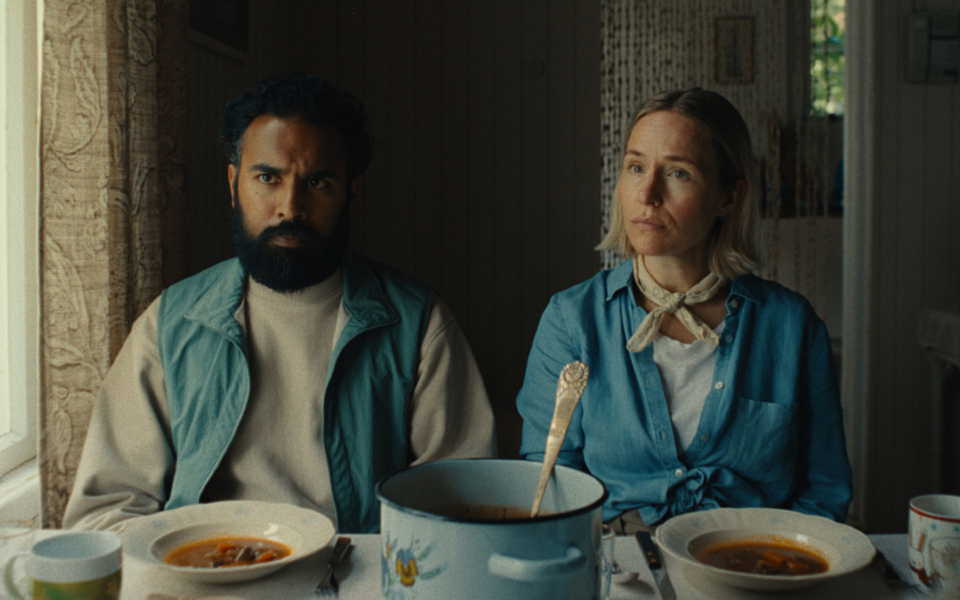
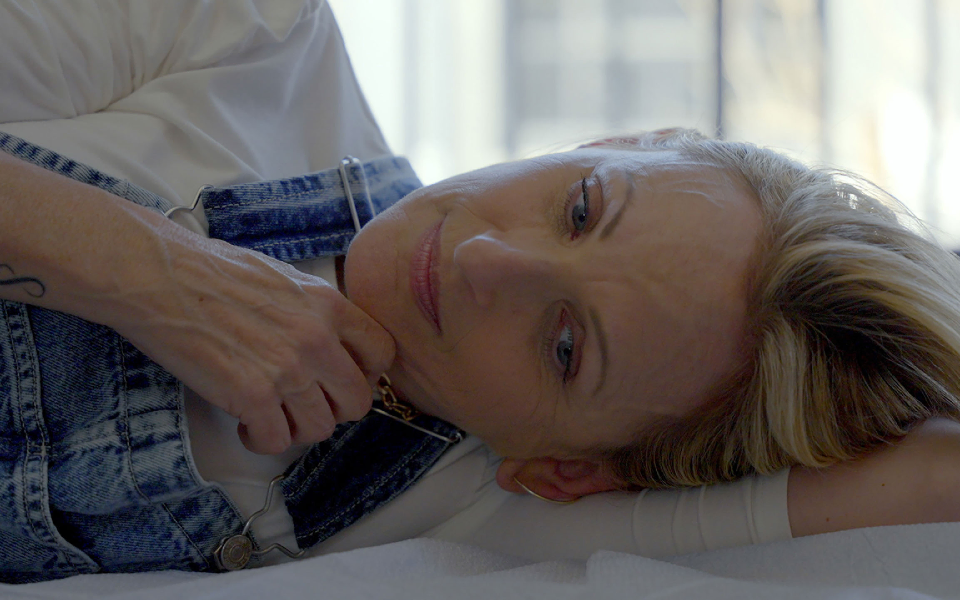




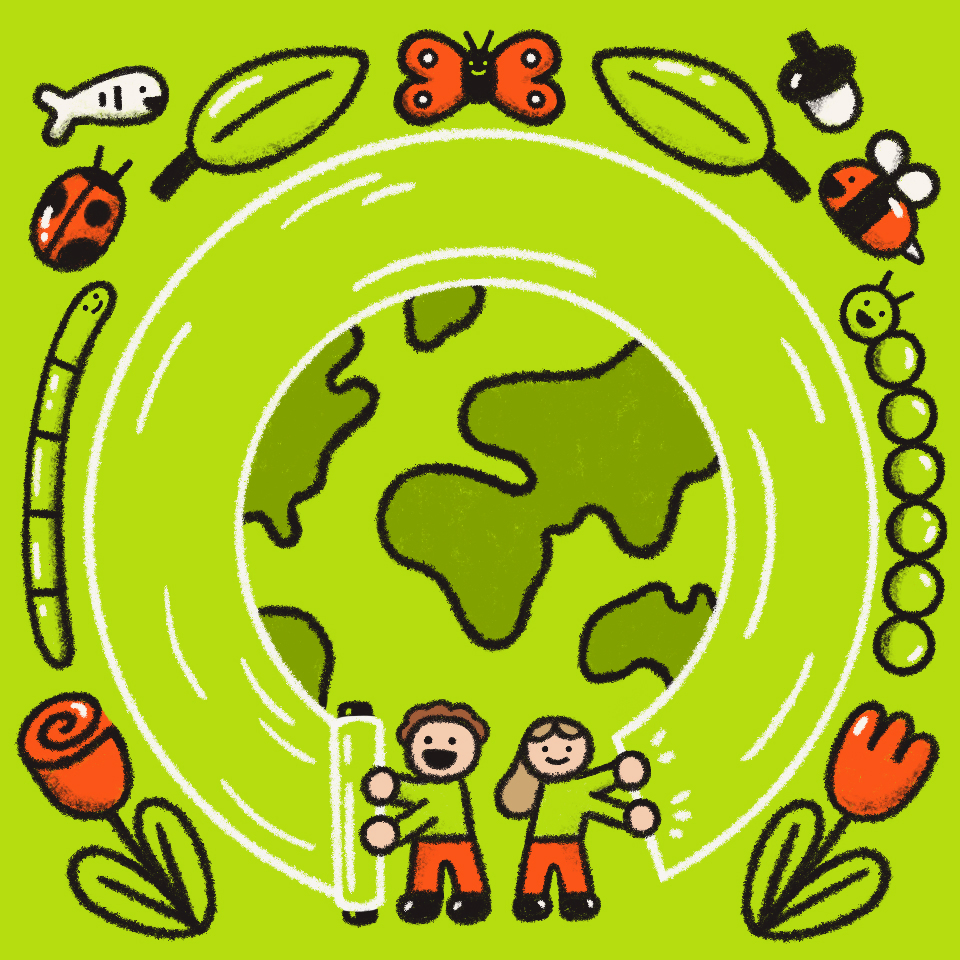
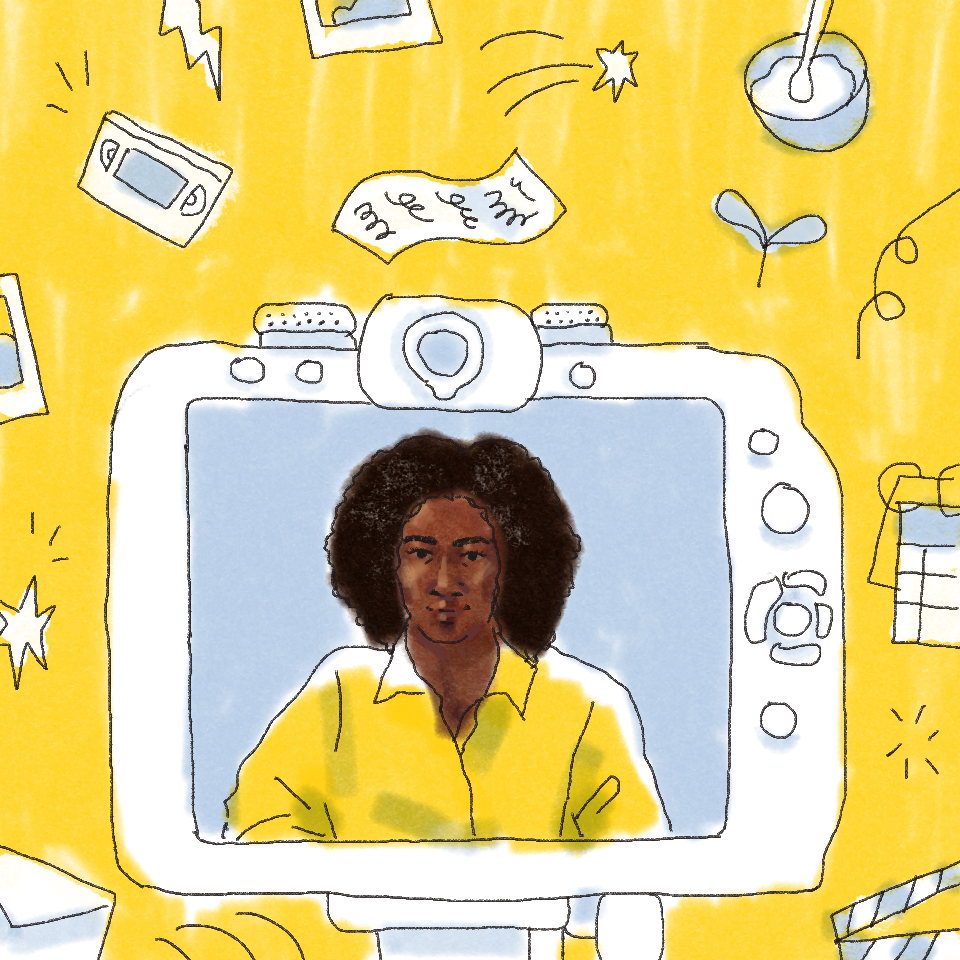
.jpg/_jcr_content/renditions/1200x628%20(5).webp)



